






























































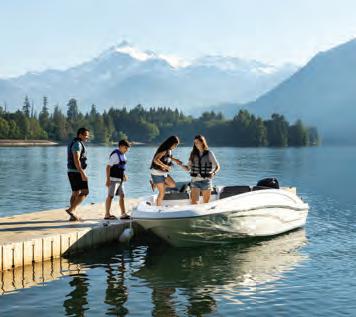
Embarking on the open water is an exhilarating experience, flled with the promise of adventure and relaxation. Whether you’re a seasoned sailor or a weekend cruiser, protecting your vessel with proper insurance is not just a choice—it’s a necessity. Explore the reasons why every boat owner should prioritize boat insurance for a worry-free voyage.


The open water can be unpredictable, with unexpected storms, collisions, or other potential accidents. Boat insurance can give you fnancial protection if there is damage to your vessel, providing coverage for repairs or replacement.
Accidents on the water can result in damage to other boats, docks, or even injuries to passengers. Boat insurance offers liability coverage, which can pay for damages or injuries you’re liable for while boating, up to specifed limits, and lawsuit costs if you’re sued. This includes damage you cause to another watercraft or if someone on or near your boat is injured and you’re found to be legally responsible.
Unfortunately, boat theft and vandalism are realities that boat owners face. Boat insurance has comprehensive and collision coverage that can protect you against events outside of your control, including theft and vandalism.
Accidents on the water may lead to injuries for you or your passengers. Boat insurance offers a range of optional medical payments coverage limits, helping to cover medical expenses if you are in an accident or someone is hurt on your boat, regardless of fault.
If you fnanced the purchase of your boat, most lenders require insurance coverage to protect their investment. Having boat insurance not only fulflls these requirements but also gives you peace of mind knowing that your fnancial interests are safeguarded.
Some water municipalities and marinas may require proof of insurance for docking or accessing certain areas. Boat insurance allows you the fexibility to explore different destinations without worrying about entry restrictions.
Emergency towing and assistance
Progressive boat insurance can include optional Sign & Glide® On-Water Towing coverage. If your boat is disabled or breaks down on the water, Sign & Glide® pays for on-water towing, jump starts, soft un-groundings, and fuel delivery.
Wreckage removal
If your boat sinks, Progressive boat insurance will cover the cost of removing your boat from the water (if removal is legally required).
Investing in boat insurance is not just about protecting a valuable asset; it’s about safeguarding the memories, experiences, and joy that come with your on-water adventures. Don’t let unforeseen circumstances disrupt your journey—navigate with confdence, knowing that Progressive boat insurance has you covered. Ensure a smooth and worry-free voyage, because when it comes to your boat, peace of mind is the ultimate luxury.
Scan to get a quote in as little as 4 minutes
learn more.




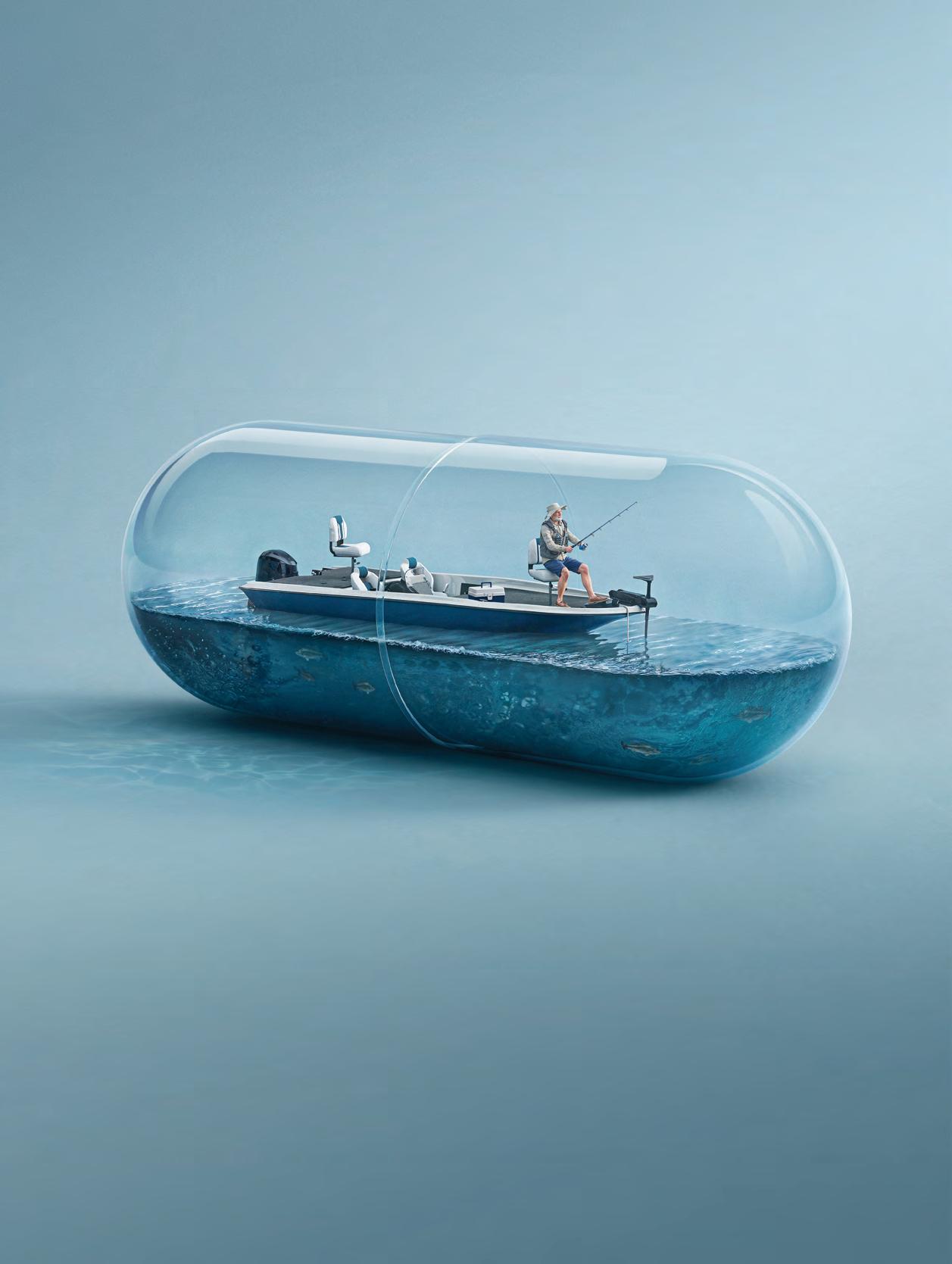


















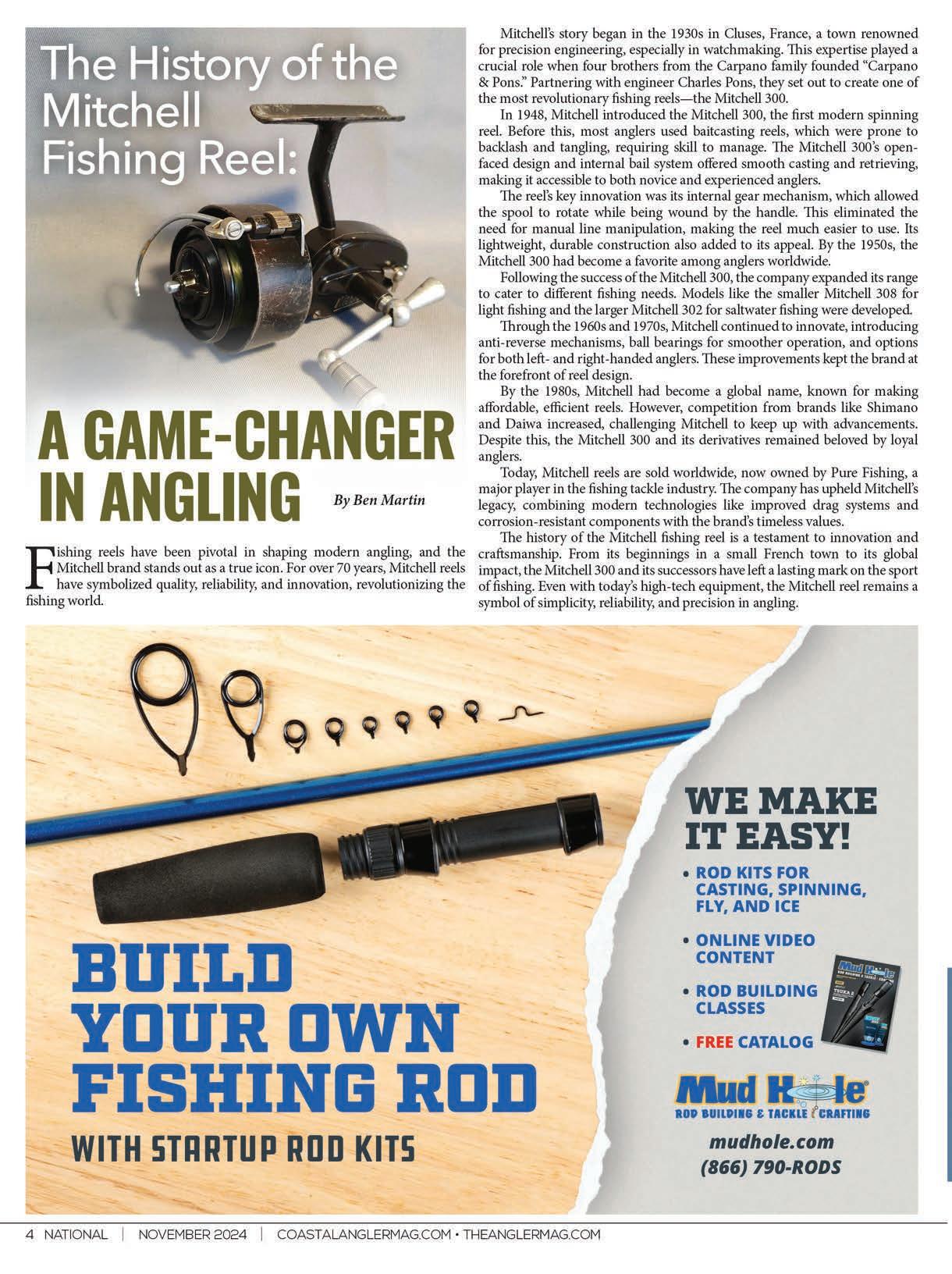
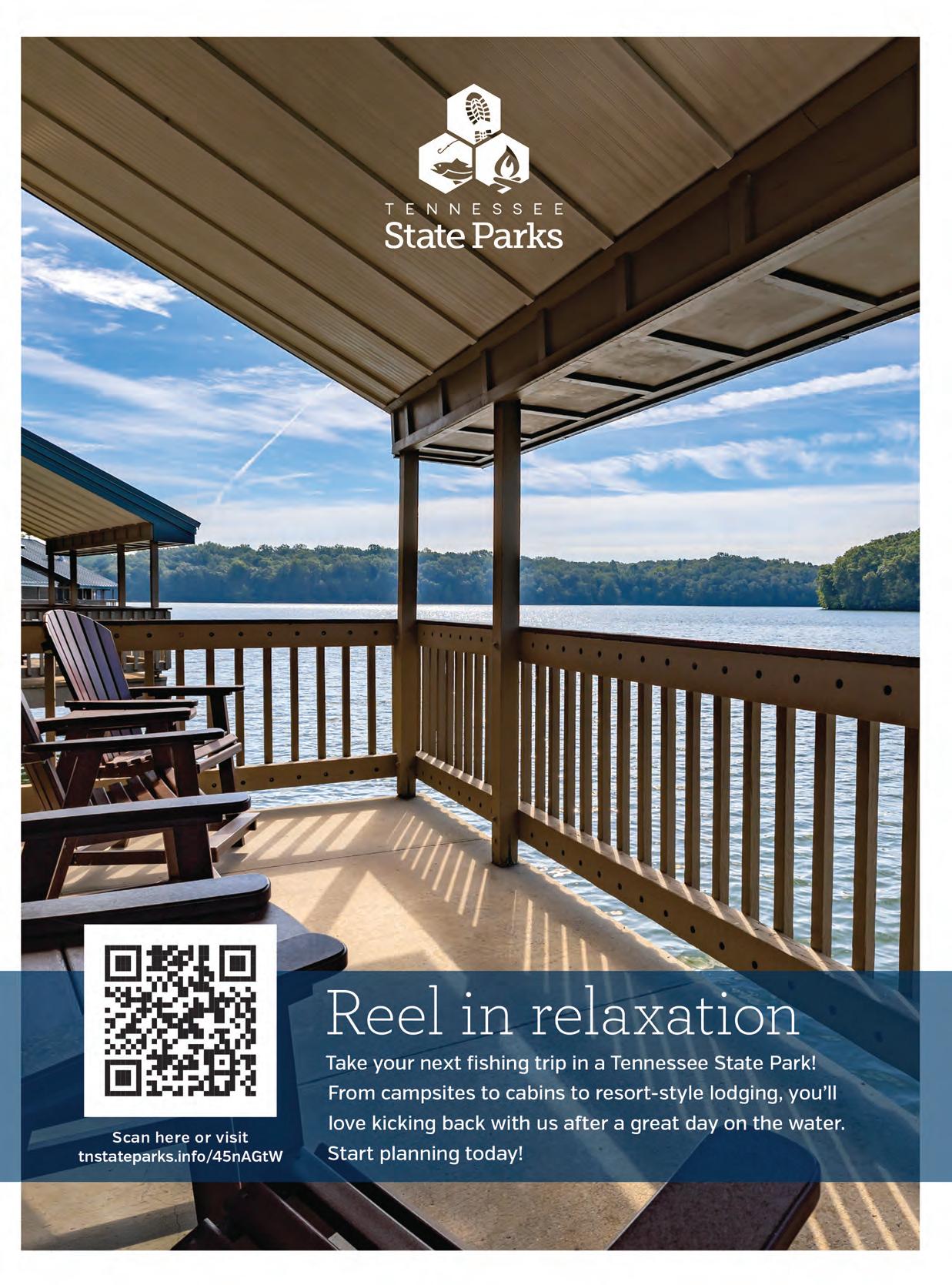

The quest to find the ultimate men’s watch has traditionally been a difficult one in the world of fashion. A timepiece with the perfect look and functionality has long been the goal of both watch designers and enthusiasts alike.
The Renegade Blue Chronograph Men’s Watch is the perfect combination of style and function. With a sleek design that features a bold blue dial, rose gold hands and hour markers, and a durable sports silicone band, this timepiece will instantly elevate any outfit.
The three sub-dials provide a precise timekeeping function. The sports silicone band is durable yet comfortable, providing a secure fit that won’t slide around on your wrist. The band is also easy to clean and maintain, making it perfect for everyday wear. The watch’s 30 Metre Water Resistance rating ensures that it has you covered whatever the occasion.
The Renegade Blue is also built to last, with a sturdy stainless steel caseback and exquisitely detailed bezel. The watch is powered by a super reliable quartz movement, which is covered by our incredible 5 Year Movement Warranty - ensuring accurate timekeeping for many years to come!
At the amazingly low price of just $99 plus S&H, this watch is an absolute steal. Don’t miss out on the chance to own the Renegade Blue and Rose Gold Chronograph Men’s Watch - order yours today!


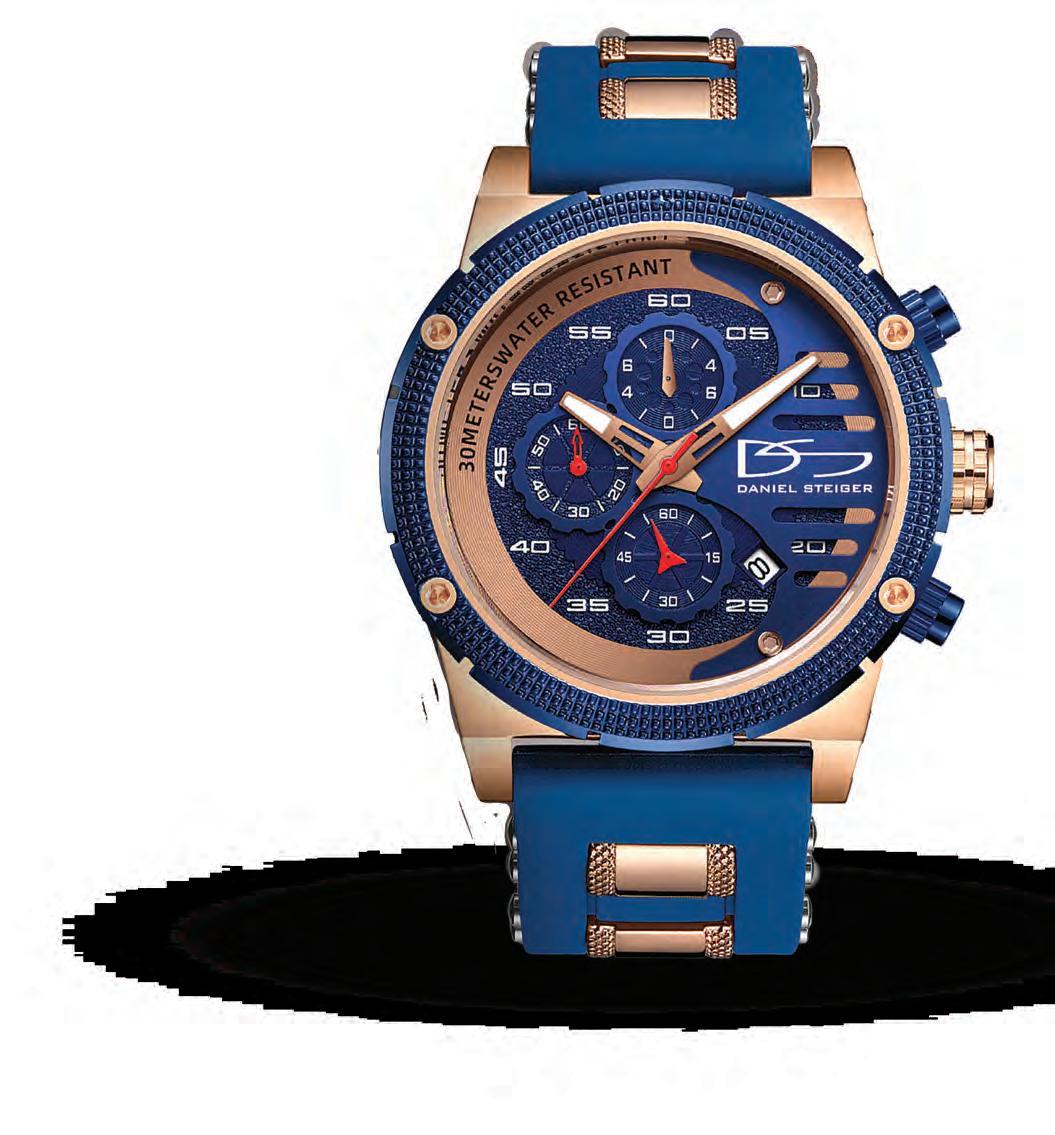


By Dr. Benjamin Cole
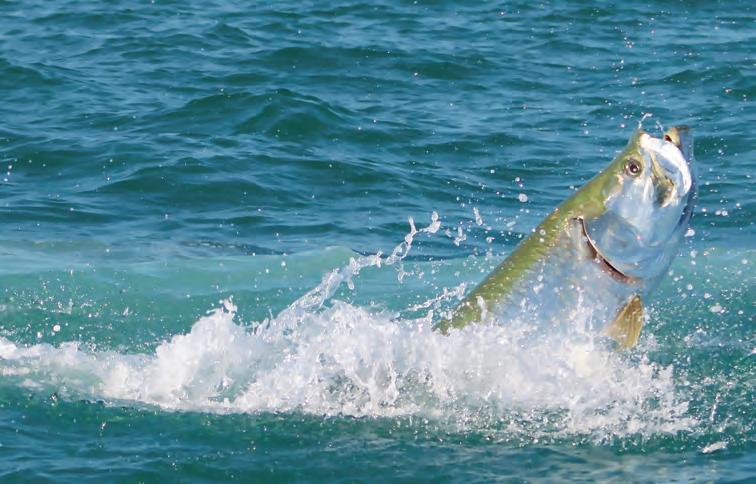
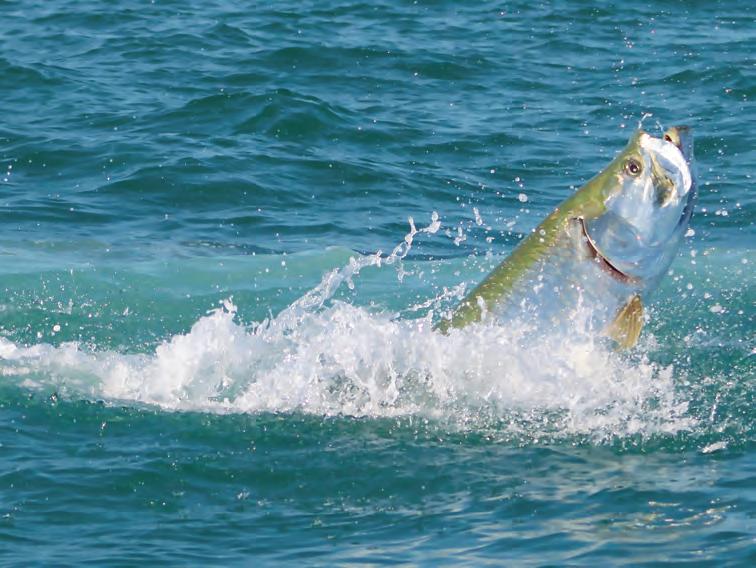
Tarpon (Megalops atlanticus), known as “silver kings,” are renowned for their acrobatic leaps and strength, making them a top target for anglers. However, their fascinating migration patterns also play a crucial role in maintaining marine ecosystems.
Tarpon migration is largely driven by the need for feeding and reproduction. Tese highly
migratory fsh can travel thousands of miles, infuenced by water temperature, food availability, and spawning needs. Preferring temperatures above 72°F (22°C), tarpon move south during colder months, seeking warmer waters.
the U.S. Atlantic coast, they travel from Virginia to Florida and the Caribbean, while in the Gulf, they move from Texas and Louisiana to Mexico. Teir northward migration begins in late spring, driven by rising temperatures and abundant food. By summer, tarpon reach as far as Virginia, signaling the start of fshing season. As fall sets in, they return south to warmer wintering grounds.
A key driver of tarpon migration is spawning, typically occurring between May and September in ofshore areas with strong currents. Afer spawning, larvae are carried into estuarine environments like mangroves and marshes, crucial nurseries for juvenile tarpon. Tese habitats are essential for the species’ survival, but environmental degradation threatens their health.
While tarpon are primarily a catch-andrelease species, improper handling during fshing can lead to mortality. Conservation eforts, including safe fshing practices and habitat protection, are essential for sustaining tarpon populations. Organizations like the Bonefsh & Tarpon Trust work to monitor migration, protect critical habitats, and promote responsible fshing.

Found in the Atlantic Ocean and Gulf of Mexico, tarpon migration varies by region. Along
Tarpon migration is a remarkable journey, driven by the search for favorable conditions. By protecting these iconic fsh and their habitats, we can ensure their survival and preserve their role in marine ecosystems for future generations.

Capt. Russ Walker

If a fsh can see the bait, they’ll hit it much faster than if they must search through grass or mud. Tat’s why I rig to suspend the bait, keeping it above the bottom where fsh can easily spot it. Grass fats are incredibly productive fshing grounds, and targeting the edges where the fat drops of into deeper water is the key to catching bigger fsh.
In around fve to six feet of water, grass growth stops, forming a natural erosional edge where fsh like trout, cobia, tarpon, and mackerel hunt. Tese edges act like a “superhighway” for predatory fsh. While smaller fsh are found on the fat, the big ones hang near the edge, diving into the deeper channel when necessary.
Te best tool for this fshing method is a fat-topped popping cork. Te cork keeps the bait suspended at the desired depth and makes a popping sound when tugged, drawing fsh to the noise. Tis is especially useful for beginners, as it’s an easy technique that produces great results. With just a few pops, the live shrimp below the cork will jump into plain sight, attracting the fsh.
As a charter captain, I’ve found this method efective for anglers of all experience levels. It’s not uncommon to catch 80 to 100 fsh during a four-hour trip using this rig. It works equally well ofshore near wrecks, suspending bait for species like permit.
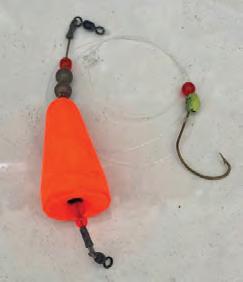
I make my own 200 lb. rated, fat-topped popping bobbers, stronger and shorter than store-bought versions. Tey’re perfect for fshing

everything from trout to tarpon, with only the hook size and leader changing. Te leader length is always four and one half feet, and the magic depth on the grass-fat edge is fve feet.
Typically, I use a 3/0 Mustad Wide Gap Hook with a 1/4 oz. egg sinker and a 30 lb. fuorocarbon leader. Tis rig works wonders for trout, pompano, mackerel, snook, redfsh, and ladyfsh.
So, give it a try! Pop the cork a few times, remove the slack, and hang on. When the bobber disappears, just “yank it and crank it.” You’ll see your catch increase by at least 40 percent. Fish On!
Capt. Russ Walker is a USCG Masters licensed fshing guide and owner of Tide Walker Charters out of Cape Coral, FL. www.tidewalkercharters.com
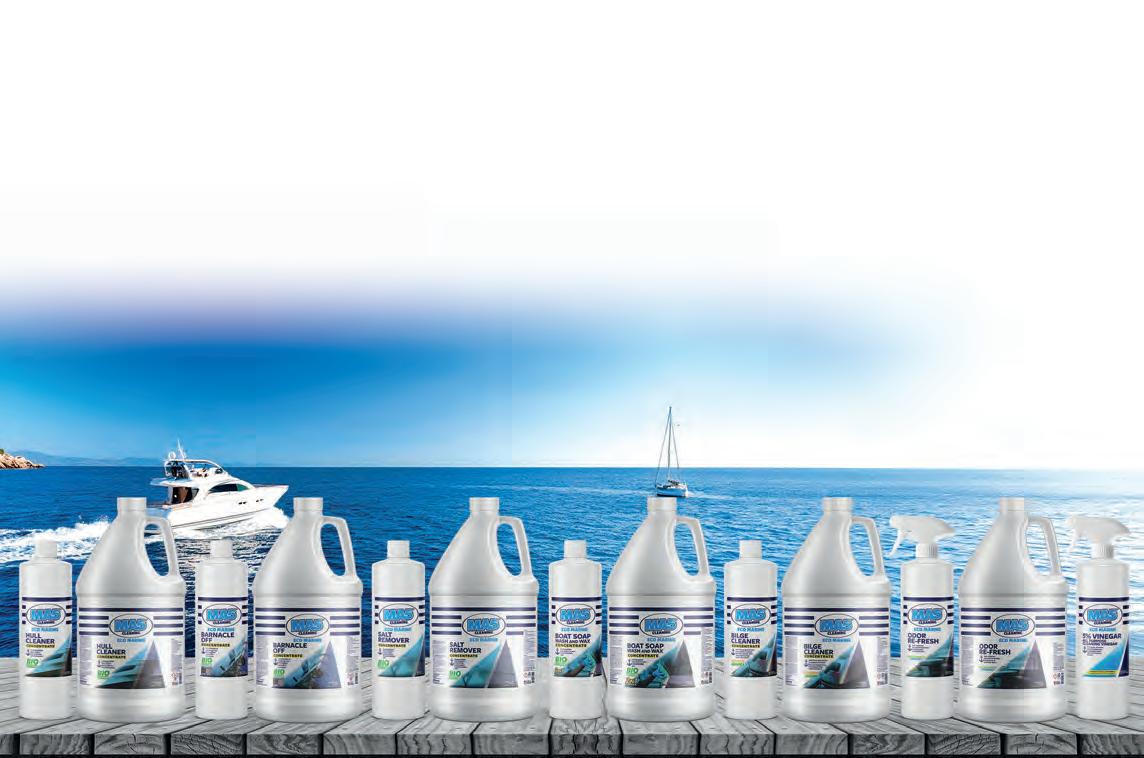
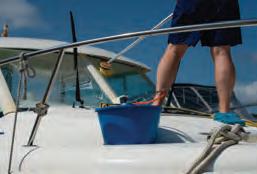












By A. deGruchy

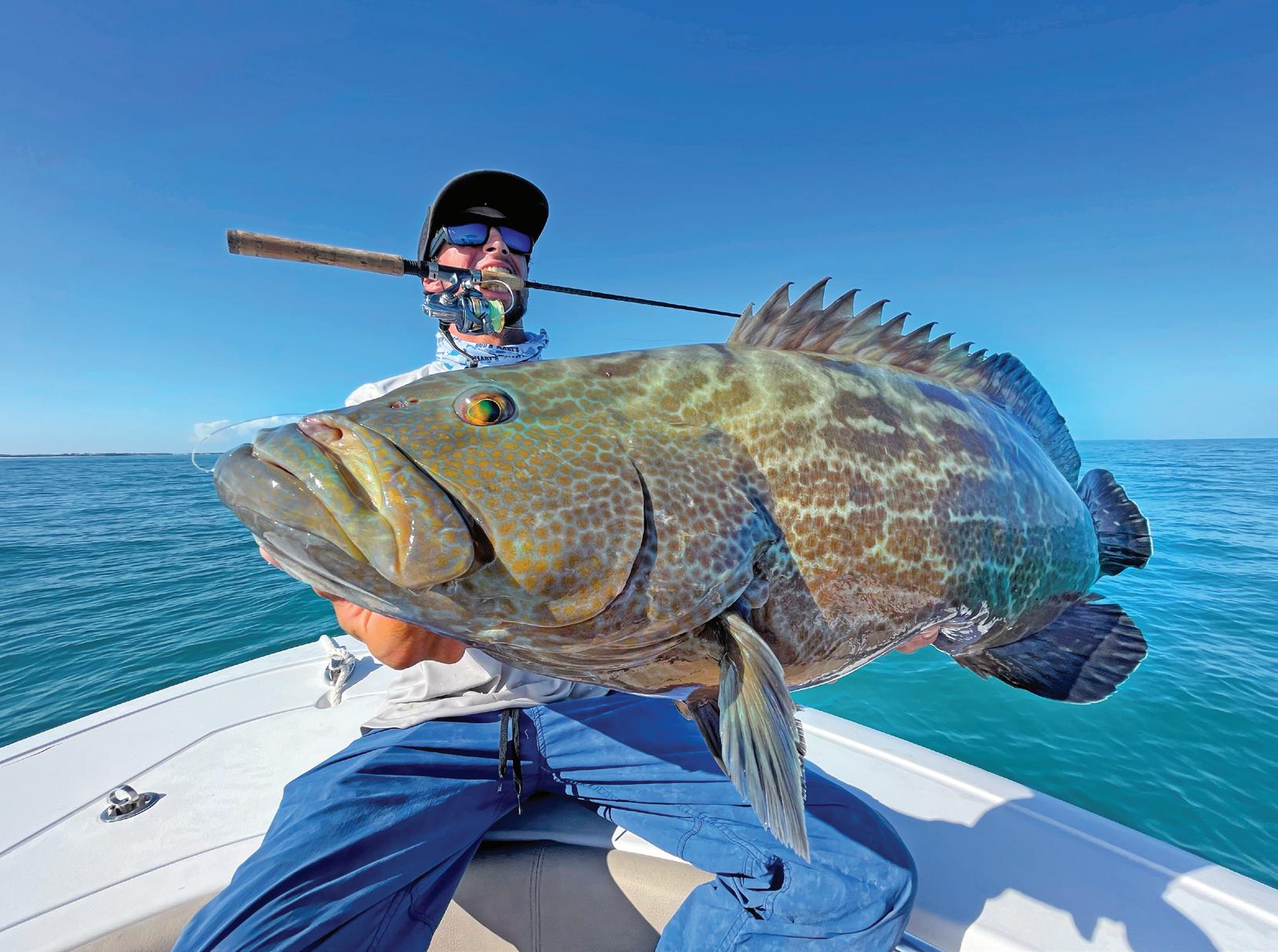
The Florida Keys transform into a fishing paradise as the intense summer hurricane weather fades and cooler fronts begin to roll in. This fall, it’s all about the patch reefs... vibrant underwater gardens teeming with a variety of species. Targeting these patches is incredibly fun and rewarding. You’ll encounter species like snapper and grouper, along with various types of mackerels. Light-action fishing is always a blast,
and in the Keys, there are countless patch reefs to explore.
To find a patch reef, look for shallow spots scattered with coral and sand, typically just a few miles offshore at depths of typically between 1530 feet. For gear, we recommend using a PENN Spinfisher VII 3500-4500 combo. The Mustad 3/0 Demon circle hooks are reliable, and when it comes to bait, live shrimp are unbeatable. It’s all about enjoying the vibes and seeing what you can reel in... mutton snapper, red groupers, porgies, Spanish mackerels, and much more!
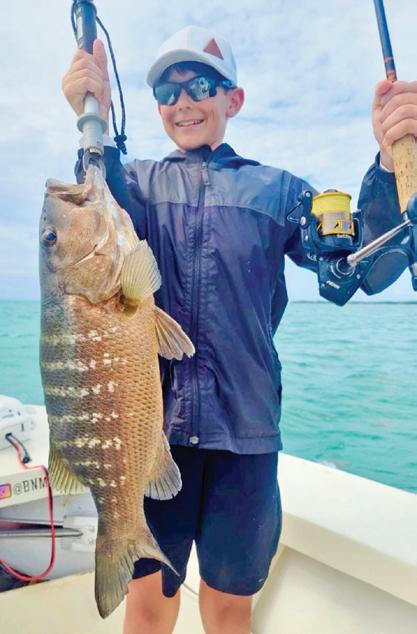
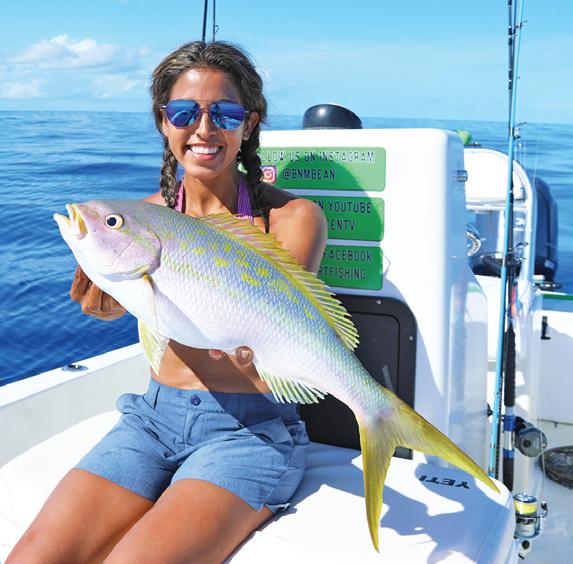
This fall will be even more special with the opening of Three Waters Resort in Islamorada. This elegant new destination offers not just stunning accommodations but also brand-new restaurants and a magnificent ambiance. Imagine savoring fresh culinary experiences while soaking up breathtaking waterfront views. After a day on the water, kick back and enjoy a drink at one of the resort’s dining venues or onsite restaurants.
So come on down this fall and get ready for some fun fishing in the Florida Keys. With Three Waters Resort as your home base and Bean Sportfishing Charters as your vessel, you’ll be hooked on the fishing, the food, and the laid-back vibes!



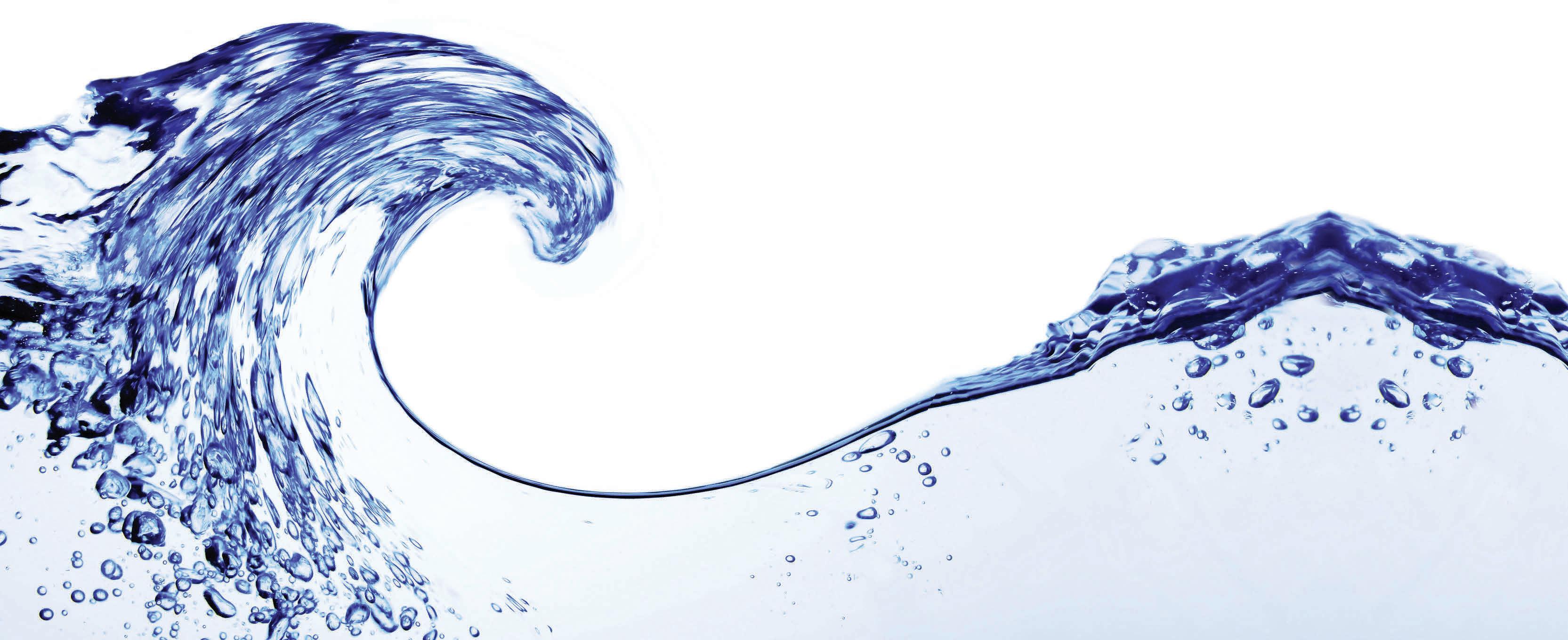



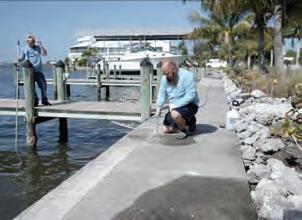
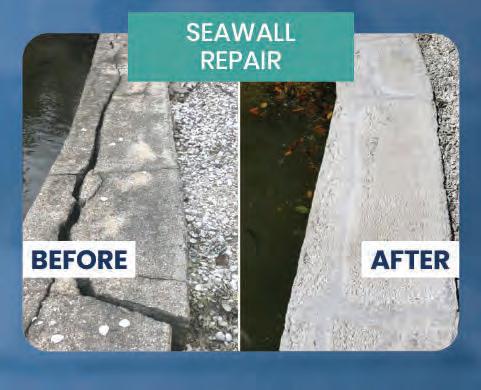
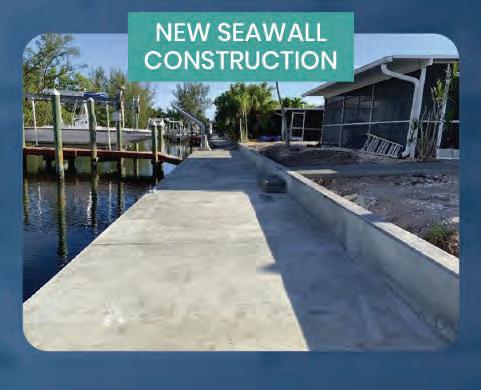
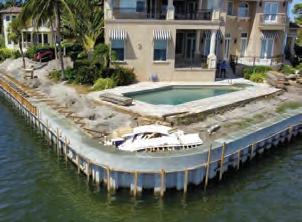










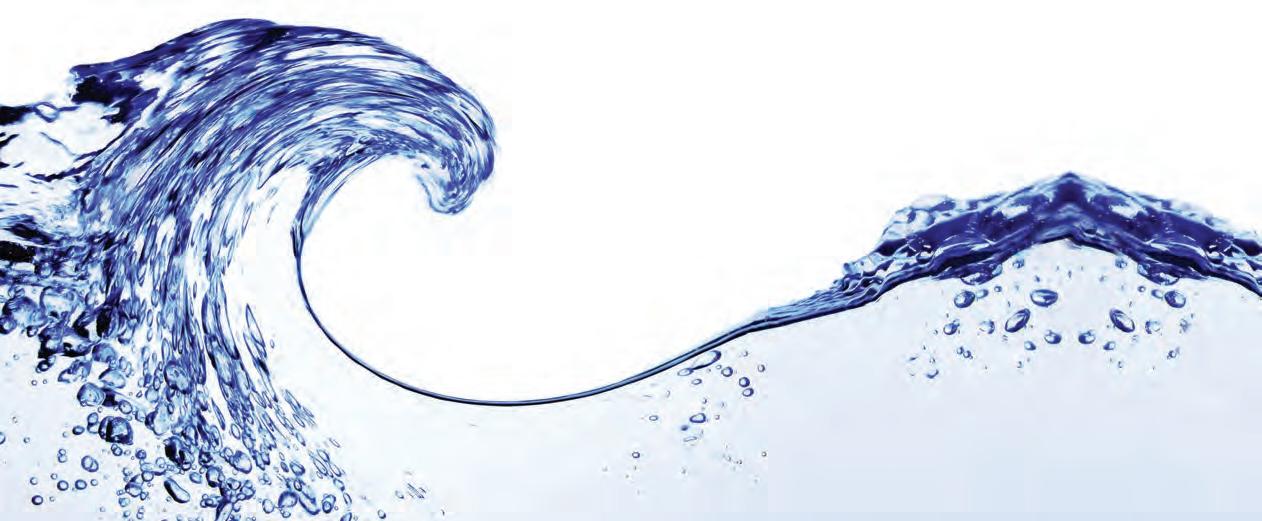
By Capt. Jack Gohmert
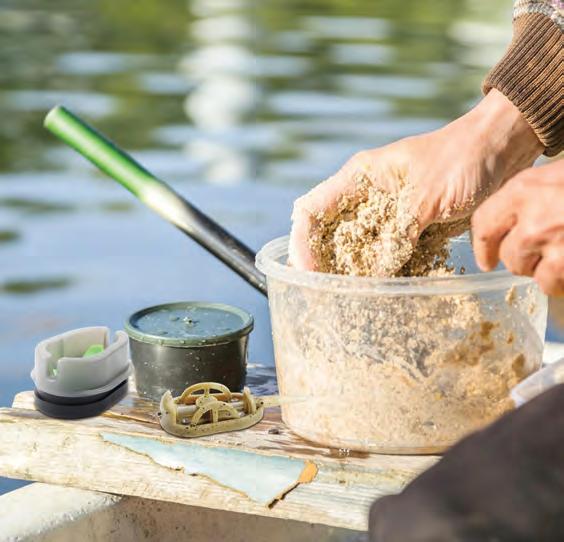
Creating your own chum bait can signifcantly boost your fshing success. Chum, a mixture of fsh parts and attractants, draws fsh to your spot by creating a feeding frenzy. Making your own chum lets you tailor it to the fsh you’re targeting and saves money. Here’s a simple guide to making efective chum and using it for the best results.
Chum is a blend of fsh-based materials that attract predatory fsh. When
placed in water, it forms a scent trail and visual signal that lures fsh like snapper, tuna, and sharks. Whether you fsh ofshore, from a pier, or inshore, chum helps by concentrating fsh around your location.
Making chum is straightforward. You’ll need the following:
Tools:
• Food processor or meat grinder
• Bucket or container
• Rubber gloves
• Freezer bags (for bulk storage)
Ingredients:
• Fish scraps (bait lefovers, carcasses)
• Canned fsh (sardines, mackerel, or tuna)
• Fish oil or menhaden oil
• Breadcrumbs or oats (to bulk up the mix)
• Optional: sand or cornmeal (to sink chum faster)
1. Gather Fish Scraps: Collect lefover fsh scraps or use canned fsh. Local fsh markets are great for sourcing discards.
2. Grind the Ingredients: Use a food processor to grind fsh scraps into a paste. For canned fsh, mash it along with the oil for a strong scent trail.
3. Add Bulk: Mix in breadcrumbs, oats, or cornmeal to bulk up the chum. Tese ingredients absorb oils and create a scent cloud. Sand can help sink the chum.
4. Enhance the Scent: Stir in fsh oil to intensify the scent, making it travel farther underwater.
5. Pack and Freeze: Freeze large batches in bags. When fshing, break of chunks and toss them into the water.
For ofshore fshing, throw small amounts of chum every few minutes to create a steady attractant. For shore or pier fshing, use a chum bag or cage to suspend and slowly release the chum. Adjust the size and consistency of your chum based on the fsh species. Larger fsh prefer coarse chum with chunks, while smaller fsh may respond better to a fne mix that creates a cloud.
Making your own chum is a cost-efective way to improve your fshing. With minimal tools and ingredients, you can craf a bait that attracts fsh and turns a slow day into a successful one.
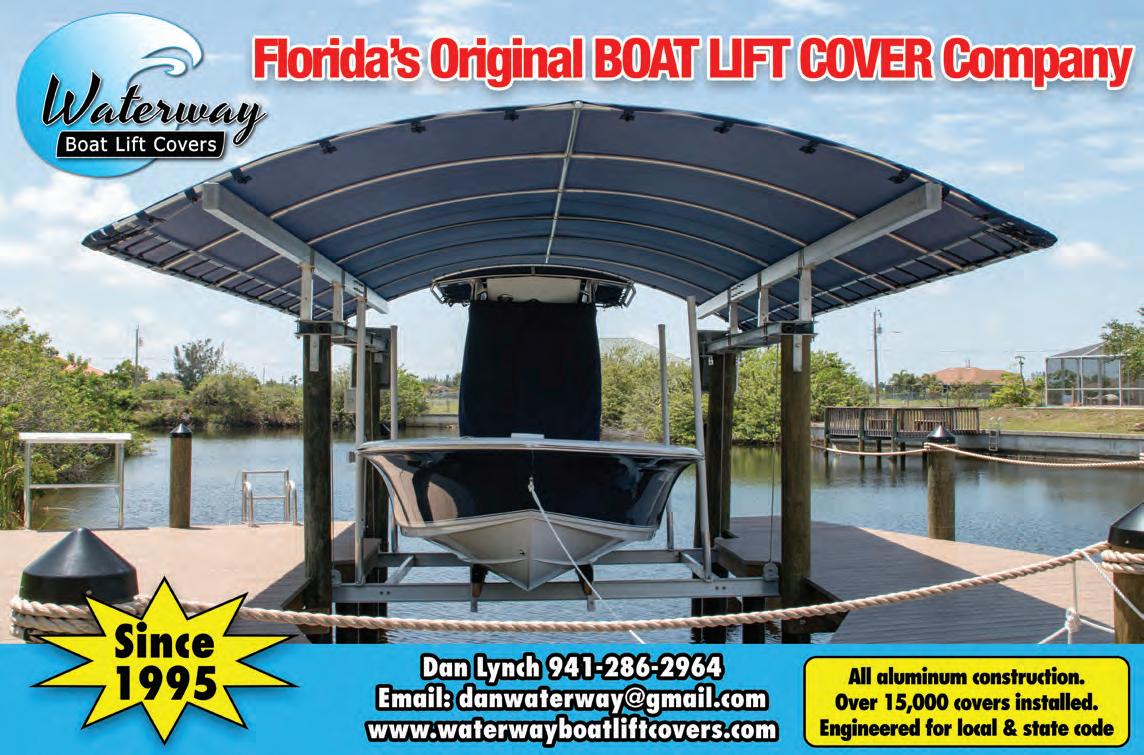




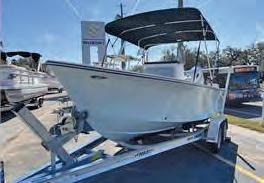
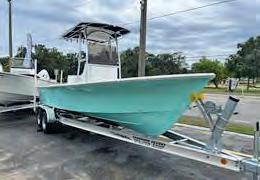


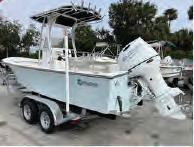




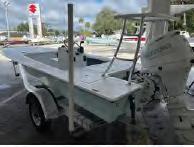
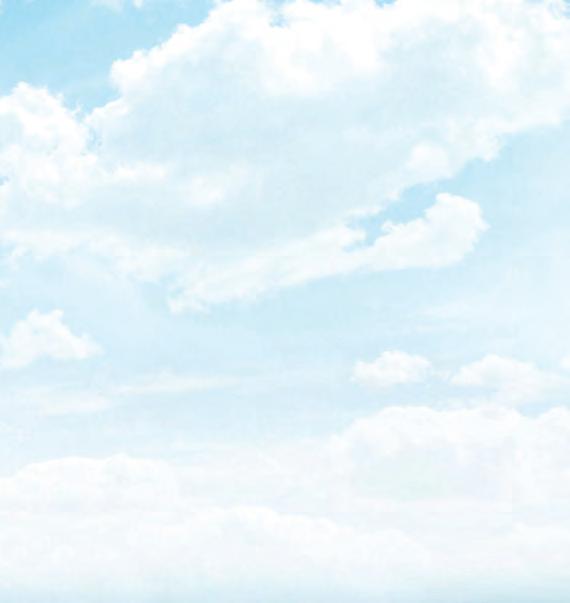
Brandon Shoaf Daniel Levesque
MARCO POMPANO Freak on the Beach 386-212-4838
CAPT. JOHN J. ELLIS Reef Wrecker (386) 402-3957 www.reefwrecker.com
CAPT. JAMIE THRAPPAS Ponce Inlet and Backwaters YellowDawgFishing.com
CAPT. MICHAEL SAVEDOW Edgewater Backcountry EdgewaterRiverGuide.com
WENDY BILES Kayaking facebook.com/wendy.m.biles instagram.com/wendy_biles_fishing
CAPT. EVAN SANDERS Sol Fishing with the Captain & Kids www.SolFishing.com
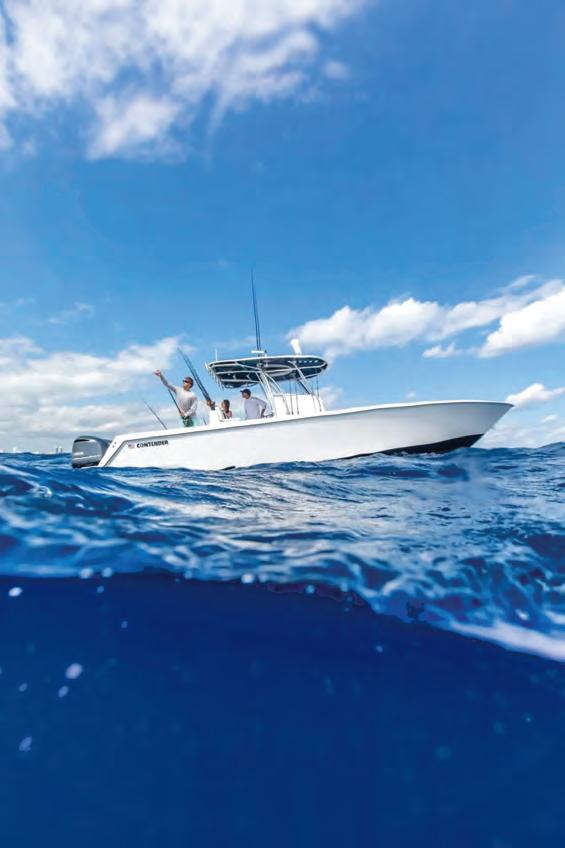
For advertising inquiries, Call Brandon at 386-260-9600 or email volusia@CoastalAnglerMagazine.com
The hardest part is over. The long wait, the doldrums, the dirty water currents, weeds, hurricane winds, catfish, ladyfish, Jack, and a whole assortment of fish that I don’t keep - over.
The ocean has mysteriously started to clean up, turning a little bit more blue-green from brown. I drove the tricycle, fully loaded down, early today, and to my good fortune. The beach was covered with sand fleas in Wilbur By the Sea, and this time I didn’t forget my rake.
I went chasing the elusive families, communities and little villages of sand fleas that come up and disappear with each passing tide, right at the low tide mark. After getting a full cup, it was on, but not right away: actually, three hours not right away.
Then, all of a sudden, tap-tap-tap-tap! Got me all up and going. Not much of a bend, but as soon as my wife Sophie reeled in a little, her instincts kept kicking in. It was on! and after a few minutes of zig and zags that are all too familiar, the first pompano scout of the season flapped onto the beach, Sophie reeling it in. Ya, mon!
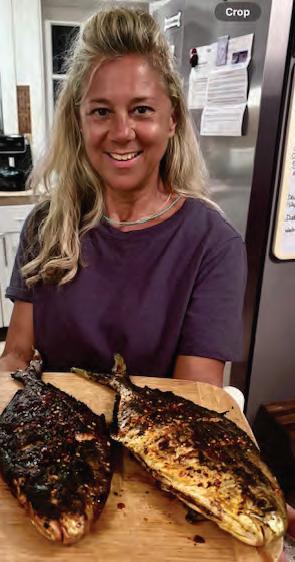
When the pompano start to run, I start to run. I’m using live shrimp, crab, knuckles, and sand fleas. The next morning we couldn’t wait to get up and come out surf fishing.
As soon as I cast out, while the rod is still in my hand, it almost pulls out. I do my famous backwards dance without even reeling yet I know I’m on. Whatever it is is taking line. If it’s a pompano, it’s a monster. This one is swimming in as fast as it can.
Onto the beach! Ni-i-i-ice pompano.
One of the things we do with all this fish is just grill it whole. There’s more meat this way than when it’s filleted, and something about a whole fish to me just tastes better.
The fish in the pictures have been roasted on the grill with Chinese chili crisp and a little dash of soy seasoning, and that’s about it. You have to let it cook through on one side when you first put it on, so it doesn’t stick to the grill .It gets a nice crisp burn on it.
First put three slices through the skin to the bone before you grill it. Turn it on each side two times, don’t worry fish are made out of 90% water. Trust me, you’ll love it.
So, things are starting to turn back to normal here: plenty of fish, the most beautiful air, cooler temperatures, and this is just the start of our pompano run! The reggae beats are on playing Shaggy, Boombastic Fantastic, and you just know that me and these fish are heading to the smoker.
MARCO POMPANO Marcopompano@gmail.com

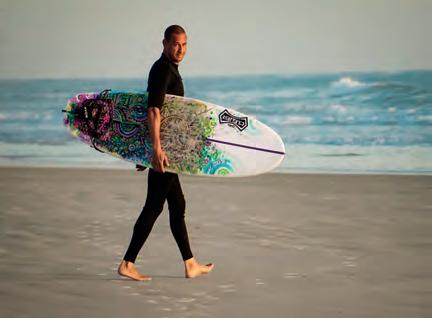
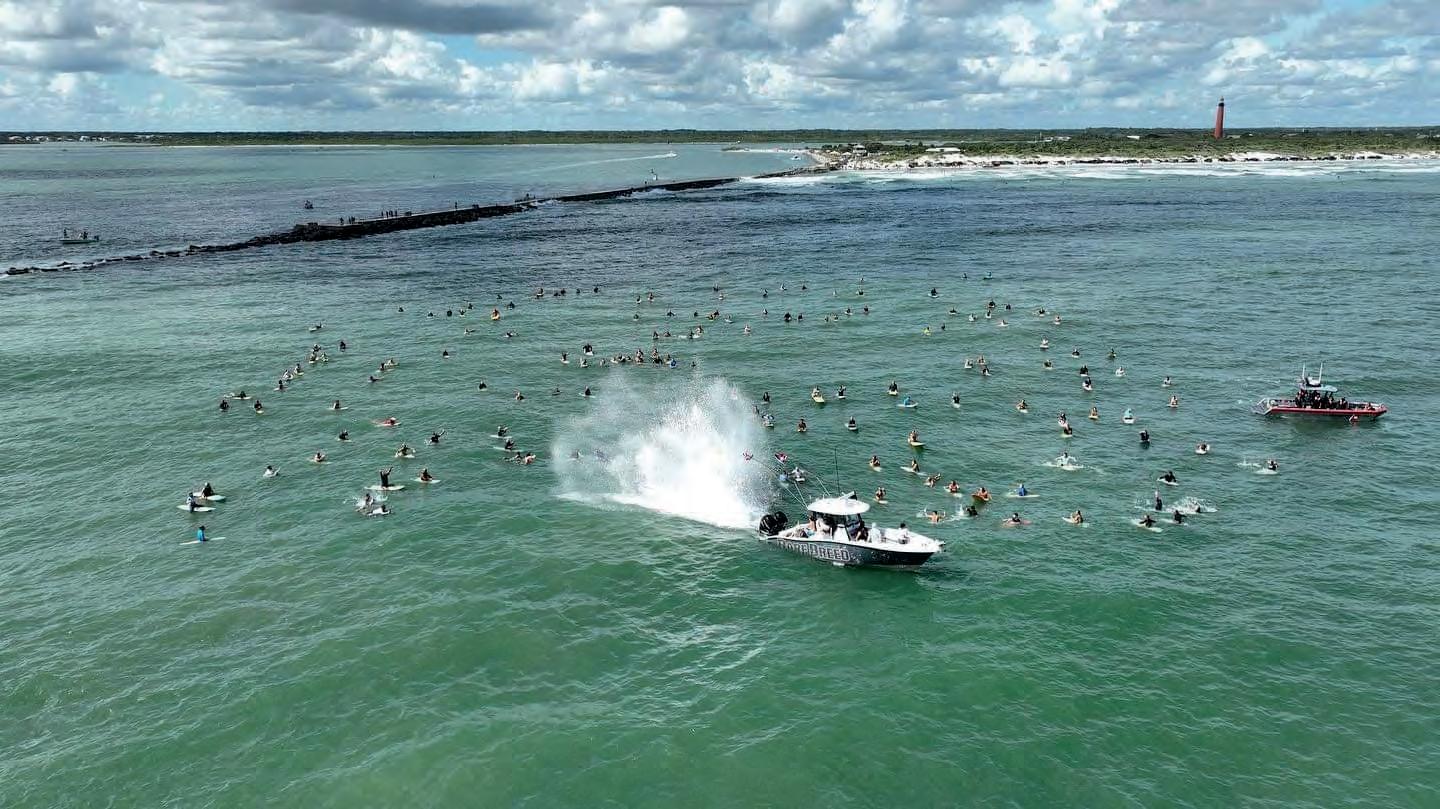


In September of this year, our local community was brought to its knees with the tragic passing of an incredible human being while surfing at the Sunglow pier. The obituary for Jorge Alvarado will read 1974 - 2024. However, a dash between those two years doesn’t hardly do justice to what Jorge Alvarado did with his 49 years on this earth.


Jorge was an incredible father, grandfather, brother, uncle to everybody, and to me a very very dear friend. What ensued after his passing was an incredible tribute fitting of the life he led. Almost immediately hundreds and hundreds of people came out of the woodwork with stories of how Jorge touch their lives. Jorge greeted everyone he saw with a smile from ear to ear, and he never met a stranger. We all have a tendency to exaggerate a little when talking about someone posthumously, but there’s no need for exaggeration here. Jorge was bigger than life, and he was better than all of us. There’s not enough room in this entire magazine to list the people he has helped through his life, but what has been most amazing to watch as his friend, is how much actual joy he brought to others’ lives. If anybody was having a bad day, I hope they ran into Jorge because he was going to make it better every time for every person. I am truly honored to call him my friend.
When you have a true friendship with someone you give a piece of yourself to them, and they in turn give a piece of themselves to you. When they die, that piece of yourself you gave to them dies, and it hurts, and we grieve and mourn that loss. But it is important to remember that the piece of themselves they gave to you does not die! We get to keep that piece of them forever! I am going to keep my piece of Jorge Alvarado right next to my heart, everyday, for the rest of my life. And I am going to do my best to #livelikejorge because the world has a big hole to fill with him gone.
A few weeks after his passing, there was an amazing celebration of life, and traditional surfer’s paddle out for Jorge. Over 200 people descended on Ponce Inlet and what happened then was truly wonderful. There were lots of tears, but there were also lots of laughs, hugs, smiles, and wildly outrageous stories of adventures past had with Jorge. Then over 200 people paddled surfboards out along the jetty and met up with over eight boats filled with people just waiting to pay tribute. The boats included the US Coast Guard, Volusia County Ocean Rescue, Sea Tow Daytona, Rare Breed Outdoors, and more. Unfortunately, I have been to several of these paddle out ceremonies and the one for Jorge Alvarado was not only the largest I have seen, but I have never felt more love than what was out there in the lineup that afternoon.
Jorge will be missed by all of us, and I look forward to the day that I can see him again.
Chris Chibbaro





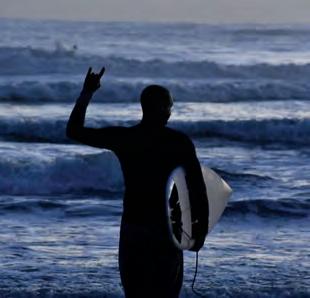



Captain John Ellis is a fourth-generation charter captain out of Daytona Beach, Florida, and the surrounding areas. With a long line of knowledge and a knack for finding fish, Captain John ensures that every trip is an unforgettable experience. Growing up in the charter industry, he combines his hospitality with the skills needed to make sure all guests feel comfortable and enjoy their time on the water. Aboard his 25 ft. Ken Craft Challenger, powered by a 250 HP Suzuki engine, guests can target a variety of species, including snapper, mahi-mahi, kingfish, redfish, and snook. Whether it’s a thrilling offshore adventure chasing pelagic species or a relaxing inshore trip, Captain John, ensures everyone on his vessel is comfortable and having a great time!
CAPT. JOHN J. ELLIS Reef Wrecker (386) 402-3957 www.reefwrecker.com


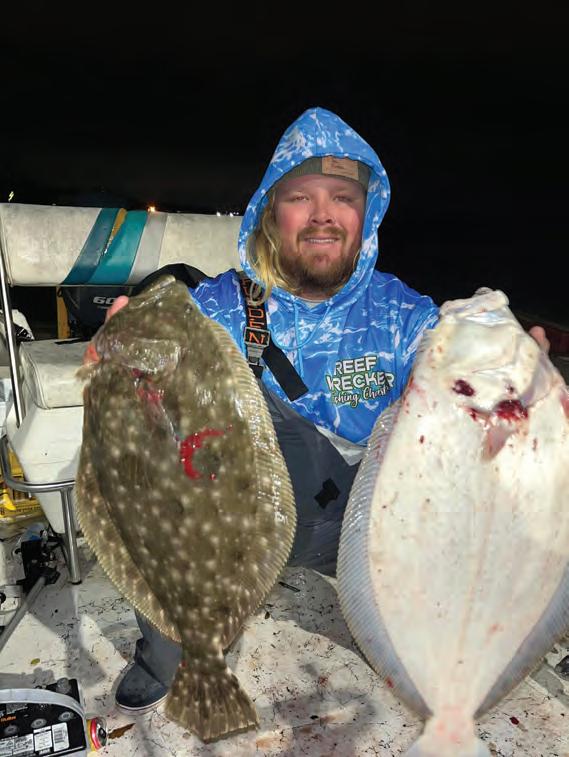
































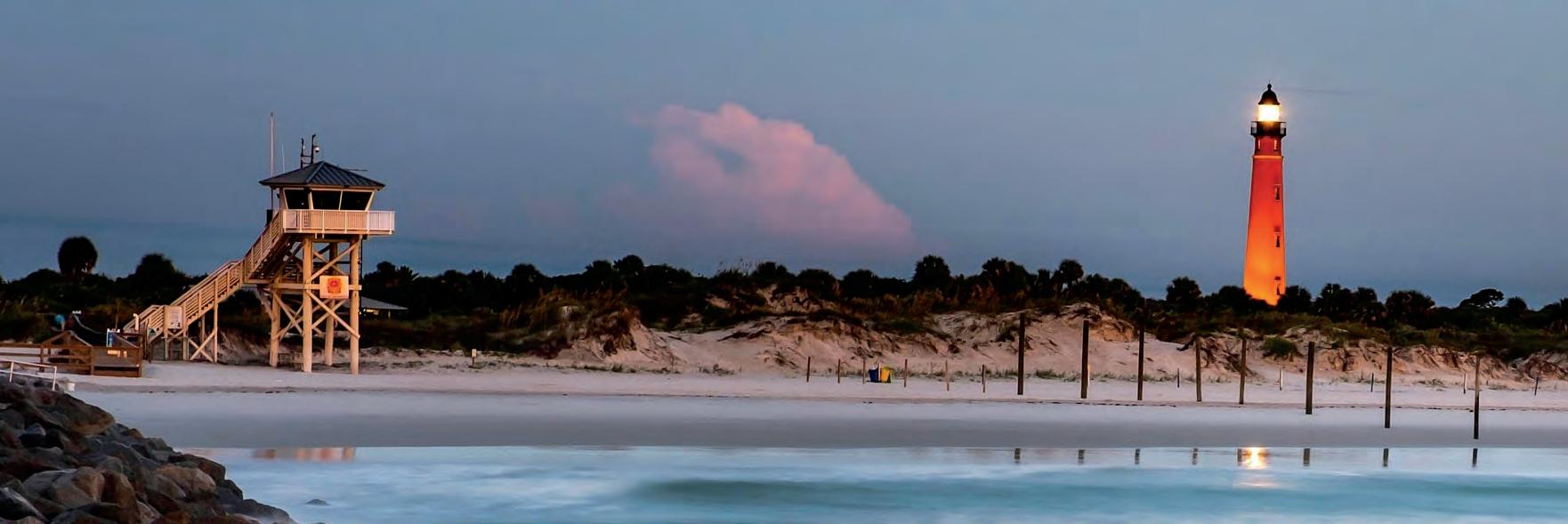
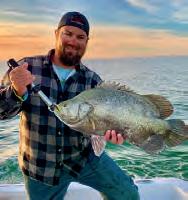

CAPTAIN MARSHALL WALLOT
386-214-9595
New Legacy Fishing Charters newlegacyfishing.com
Inshore/Nearshore
TARGET SPECIES: Redfish, Snook, Trout, Flounder, Black Drum, Tarpon, Sheepshead, Tripletail, Snapper, & Weakfish

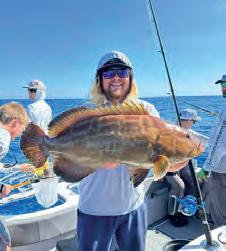
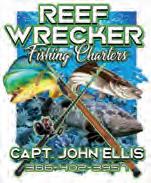
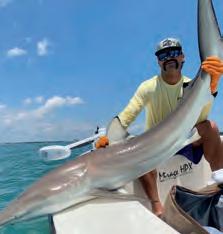
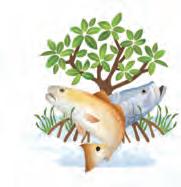

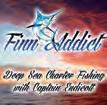
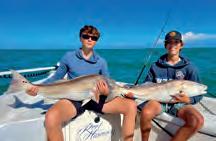

CAPTAIN JEFF PATTERSON
Pole Dancer Fishin’ Charters
386-451-4992
SmallBoatBigFish.com
Inshore/ Nearshore

Target Species: Redfish, Snook, Tarpon, Flounder, Mangrove Snapper, Spanish Mackerel, Sea Trout, & Tripletail
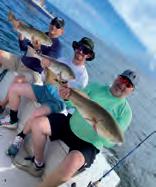
CAPTAIN JOHN J ELLIS
386-402-3957
Reef Wrecker Fishing Charters reefwrecker.com
Inshore/ Offshore
Target Species: Snook, Redfish, Grouper, Tarpon, Snapper, Spanish Mackerel, Cobia, Mahi, & Shark

CAPTAIN WILL WOLFSON
407-620-5263
Grassroots Guide Service grassrootsguideservice.com
Inshore/Offshore
TARGET SPECIES:
Snook, Redfish, Grouper, Tarpon, Snapper, Spanish Mackerel, Cobia, Mahi, & Shark
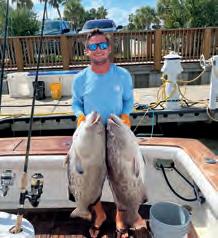
CAPTAIN CHRIS ENDICOTT 386 547 4053
Finn-Addict-Fishing finn-addict-fishing.com
Nearshore/ Offshore
Target Species: Grouper, Snapper, Amberjack, Triggerfish, Mahi Mahi, Wahoo, Tuna, Shark, Sailfish, & Marlin

CAPTAIN TIM RUSSELL
386-846-1675
Captain Daddy’s Fishing Charters captaindaddysfishing.com
Inshore/Offshore
Target Species: Redfish, Flounder, Snook, Tarpon, Cobia, Grouper, Wahoo, Snapper, Seabass, Kingfish, Mahi, Sailfish
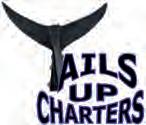
Tails Up Fishing Charters tailsupcharters.com
Captained@tailsupcharters.com
Target Species: Gag Grouper, Mangrove Snapper, Amber Jack, Cobia, Triggerfish, Wahoo, Mahi, Tuna, Sailfish, & Marlin

CAPTAIN MARTY GOLDYS
386-679-0317
Reel Harmony Fishing Charters reelharmonyfishing.com
Inshore/Nearshore
Target Species: Tarpon, Snook, Redfish, Trout, Flounder, Sheepshead, Cobia, Tripletail & Shark

Ferg’s Guide Service fergsguideservice.com
Inshore/ Offshore
Target Species: Redfish, Snook, Tarpon, Amberjack, Sheepshead, African Pompano, Mangrove Snapper

Rare Breed Charters rarebreedcharters.com
Offshore/ Nearshore
Target Species: Grouper, Red Snapper, Tuna, Mahi Mahi, Wahoo, Tuna, African Pompano, Alligator, Deer, Hog, Elk, & Wild Turkey
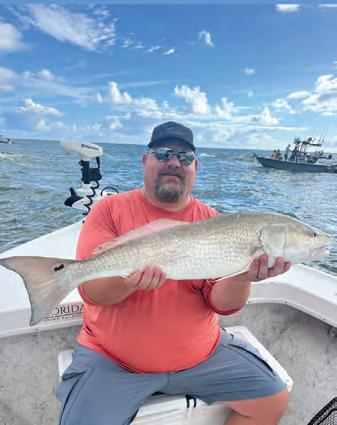
November is a welcome change for a few reasons including lower temperatures and the wrap up of hurricane season! I hope everyone made out ok and are safe with the storms of October , we saw lots of damage in Volusia but I was impressed with the amount of local support I seen with family and community members all helping each other . That being said November is a really good month for fishing! Early November it will still be a hot fall bite at the inlet with a good number of bull redfish being caught and a lot of good snook fishing to be had ! If your fishing from a boat around the inlet or from the jetties or shore , try using live blue crab. For whatever reason in November they really want this for their meal, maybe they have become sick of mullet as the fall run comes to an end. I like to pop the shell off and half these baits before putting my 3/0 or 4/0 circle hook through the back fin knuckle . These baits should be on the bottom with 2 ft of 30-40 lb flourocarbon leader. I also like to swap these baits out every 15 min or so to keep them fresh. If you can find fish drop ahead of them and they will pick up on the scent in no time! Big stud slot and over slot snook are fun to target in November. I’ve had some of my best night dock light fishing for big snook this time of the year before water temperatures start to fall . Especially those first couple cold fronts with cooler nights . If you can time one of these fronts with an outgoing tide you should be able to score! I prefer select shrimp with a longer 4 -5 ft 25 lb flourocarbon leader for this type of fishing and a 3/0 circle hook. Stealth is also key to this type of fishing including your noise level and your set up so no swivels tie your leader directly to your braid. Don’t over work a light or keep throwing right into the light , work the edges . If you get a few fish move on to the next light , you can always come back an hour or so later and get another bite. Get out there and enjoy some fall weather, and always feel free to stop up at our shop , Yellow Dawg Bait & Tackle, 35 high bridge road in Ormond Beach to pick our brains on fishing. If you see us out there say hello!

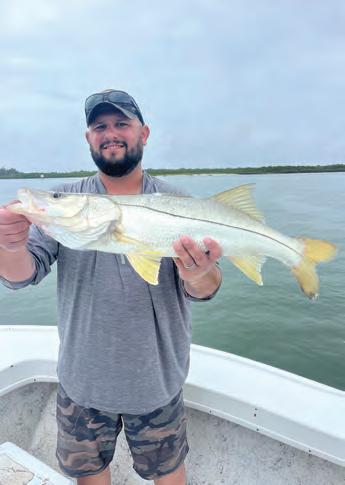
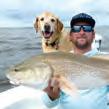


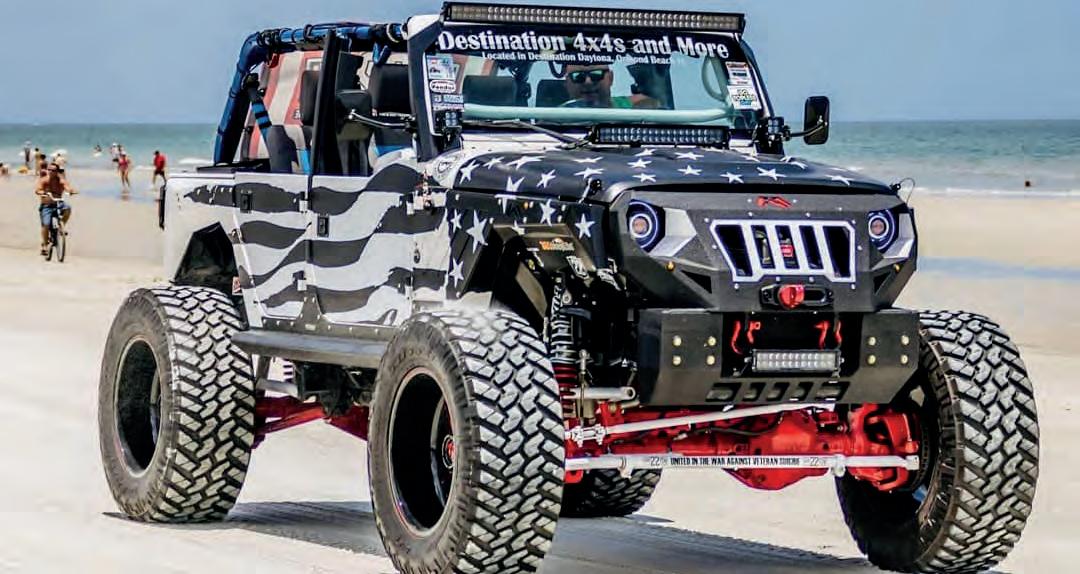




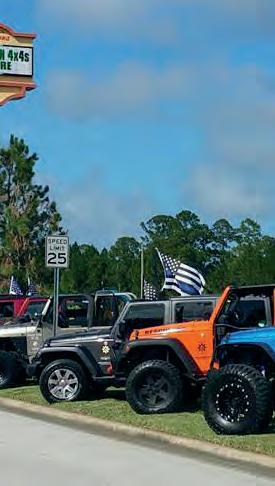

November can possibly begin the transition from warm to chilly Florida, early winter fishing patterns will emerge if we have chilly weather this month, the subtropical coastal migrating species will begin moving south where they spend the winter, including Tarpon, Jack Crevalle, Ladyfish, Pompano, and Spanish Mackerel. The mullet run follows the same south bound route, how soon and low the water temperatures drop will determine the timing.
Resident fish Redfish, Snook, Seatrout, Snapper, etc remain in our waters through winter, cold water species will begin to move in, including Sheepshead, Black Drum and Bluefish. Mosquito Lagoon water levels can remain high after a flooded autumn, in the lagoon and backcountry, shorelines can still be a good bet with high water, also shallow grass, and the flooded marsh, more sight fishing if clearer water, more blind casting soft plastics and soaking cut or live finger mullet/ mud minnows in cloudy water. Early morning throw top water lures over shallow edges, and over top of submerged drop offs, after the sun is up, switch to sub surface, soft plastics with 1/8 or 1/16 jig head for deeper water, or weedless jerkbaits in the shallows, in the backwaters free lined live shrimp or finger mullet are always a go to bait, hard plastics like MirrOdines and twitch baits also good. For Pompano in the surf, look for clean water, fish the sloughs between sand bars, sand fleas, cut clam, “fish bites” and peeled shrimp can be best choices for bait. Some pomps also find their way into the backwaters. Snook season is still open, 28” to 32” slot size limit, 1 per person a day, a Snook permit on your fishing license needed to keep one. To target bigger fish, go with bigger baits, like mullet, pinfish and select shrimp, free lined for surface action, with small weight for deeper spots, on artificials, larger swimming lures for surface, jigs and bucktails for
deeper, fish Ponce Inlet jetties and channel, bridge pilings, docks, Spruce Creek and Tomoka areas, Haulover Canal, nightime, early morning before sunrise, moving water can be best in the tidal areas. November also continues the bull Redfish spawn, Ponce In let is the center of attention, they can also be along the Intracoastal Waterway, NSB bridges, and Haulover Canal, anchor or drift and soak half or whole Blue Crabs, live Pinfish, or Mullet. Before the chill comes, Snook, Tarpon and Sharks can also be in the inlet with the big Reds. Some years the first cold spell can come this month, if it’s fast and hard, lagoon fish can get a little shocky after a year of warm water as they get used to the first cold water of the year. The near shore ocean this month can be very good for southward migrating schools of Spanish Mackerel and Bluefish from near the beach out to about a mile, watch for surface activity like white water strikes and diving birds, they will be feeding on smaller size baitfish so match the hatch with small long casting shiny spoons, Gotcha plugs and flies.
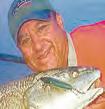



hy is it that whenever Florida anglers hear about an impending major storm such as a hurricane, we forget about prepping our homes and start planning our fishing trips?! Well, I can tell you it’s all about the BP! …Barometric Pressure! When the BP starts to drop, water and air temperatures decrease as well as the amount of UV light in the water. This gives fish and advantage over their prey and triggers them to hunt. Also, when the water is churning during a storm, the oxygen levels change and that can help energize the fish to hunt for food. Rising water can also be a good time to fish, but not when they are at flood stage. The good bite comes when the rain is about to start and last until about 24 to 36 hours after the storm passes as certain lakes and rivers continue to take runoff. Receding lakes are generally not the greatest time to catch fish consistently because the fish instinctively spend more time trying to find safety in deeper water than they do trying to eat. I did some saltwater fishing right before hurricane Milton and I caught more redfish in one trip than I ever have before! It was a fun day with overcast skies, cooler temps and frisky fish! Even the bites were more aggressive than usual. After my family finished cleaning the yard debris from our home and helping our neighbors with their storm damage, I was already focused on the post hurricane bite! This time I decided to try a couple of lakes for bass. None of the fish were in their typical spots holding close to banks or grass lines in shallow water. They had gone to deeper water offshore and if you could find the right vegetation, the big ones were biting! Needless to say, fishing has been great the last week or so, but as my next tournament is approaching, I can already anticipate it going right back to the typical, Florida “grind” to catch quality fish!
WENDY BILES
facebook.com/wendy.m.biles instagram.com/wendy_biles_fishing





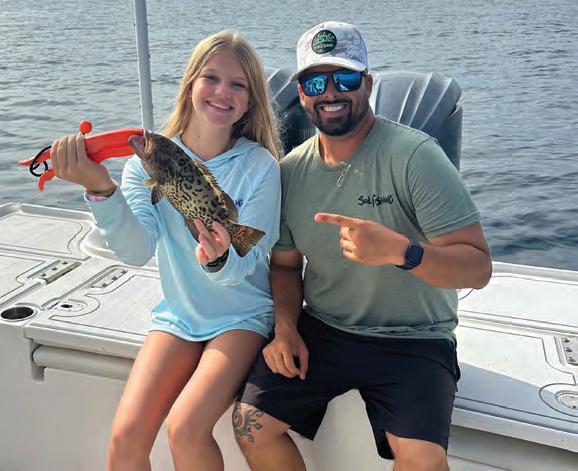
aptain & The Kids strives to always promote youth anglers both at the local level as well as nationally through our “Youth Angler Program.” If it was not for passing down techniques, traditions, and the love for the water, it would slowly fade away. It is our mission to always instill conservation and ethical fishing to our youth!
Capt. Evan had the honor of taking local NSB Youth Angler Azalea and her family on their first ever nearshore Youth Trip! The morning started off with an amazing sunrise as we headed east out of Ponce Inlet in our 27 Tidewater Custom. When we arrived at our first stop, it did not take but just a few minutes before Azalea was reeling in the first catch of the day which was a Weakfish. After a few hours we headed a little further out to target some other species at a local bottom fishing spot. With her rod in her hand and ready to fish, Azalea dropped down and waited for the bite. After a few minutes she thought that she was stuck on the bottom but then, the line started screaming off! After a hard fight, she landed her first ever Grouper which was the catch of the trip! In Azaleas words “This was the biggest fish I ever caught!!” We ended the day off by going to a local sandbar where they enjoyed relaxing with their toes in the sand!
Captain & The Kids program is made possible by all of our retailers who stock Sol Fishing gear such as our hats, decals, shirts, and other apparel. Stop by New Smyrna Beach Outfitters, Outriggers, Donald’s Bait & Tackle, 38 Live Bait, E & J Bait & Tackle, Sunglass Cabana, Shades of New Smyrna Beach, Boaters Exchange, and Pedego of NSB to get your Sol Fishing gear to help support Captain & The Kids! Sol Fishing’s amazing sponsors Penn, Fenwick, Plano, Fin Nor, Daiichi Hooks, Powerpole, Seadek Marine, Brighter Days Marine, and Castaway Customs also play a huge roll in the program!
CAPT. EVAN SANDERS Sol Fishing Charters & Gear www.solfishing.com 407-796-2088


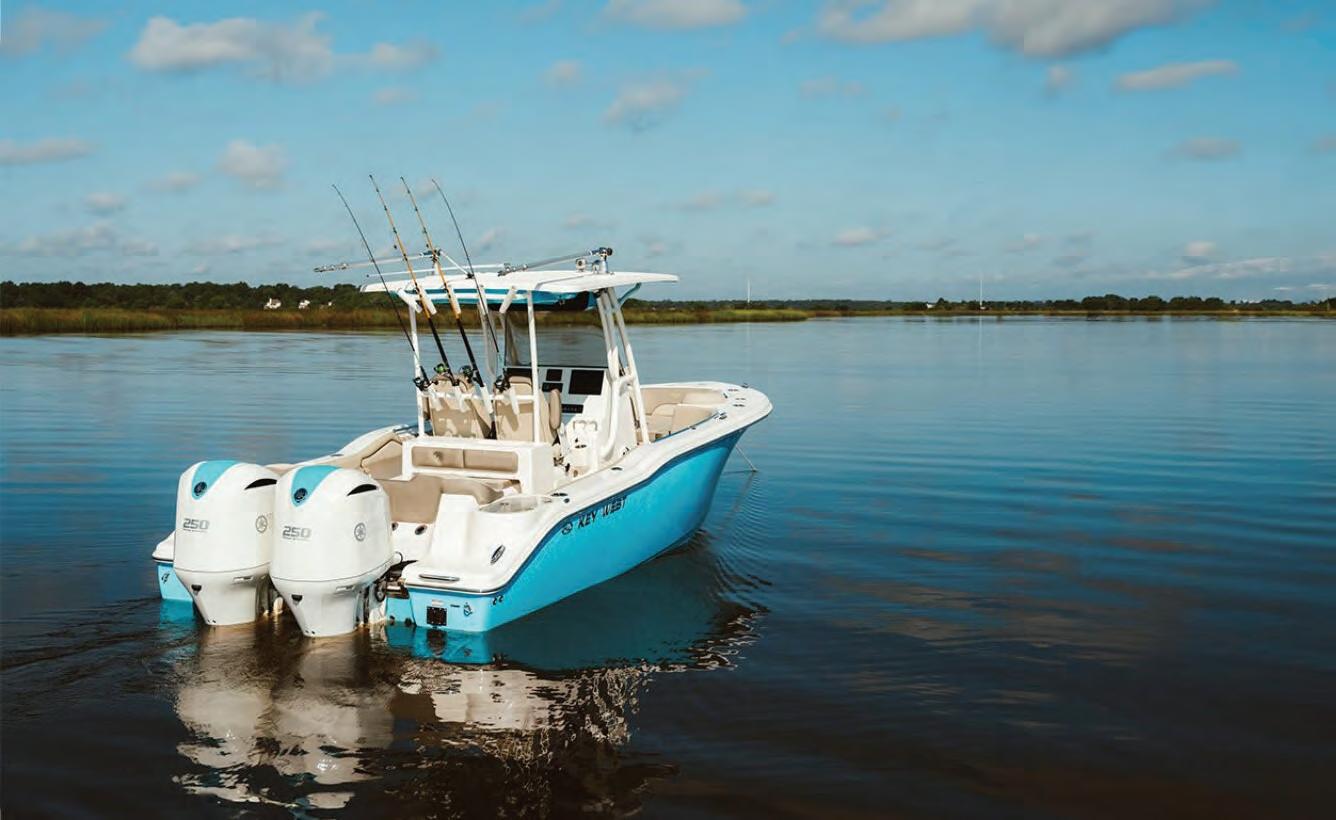

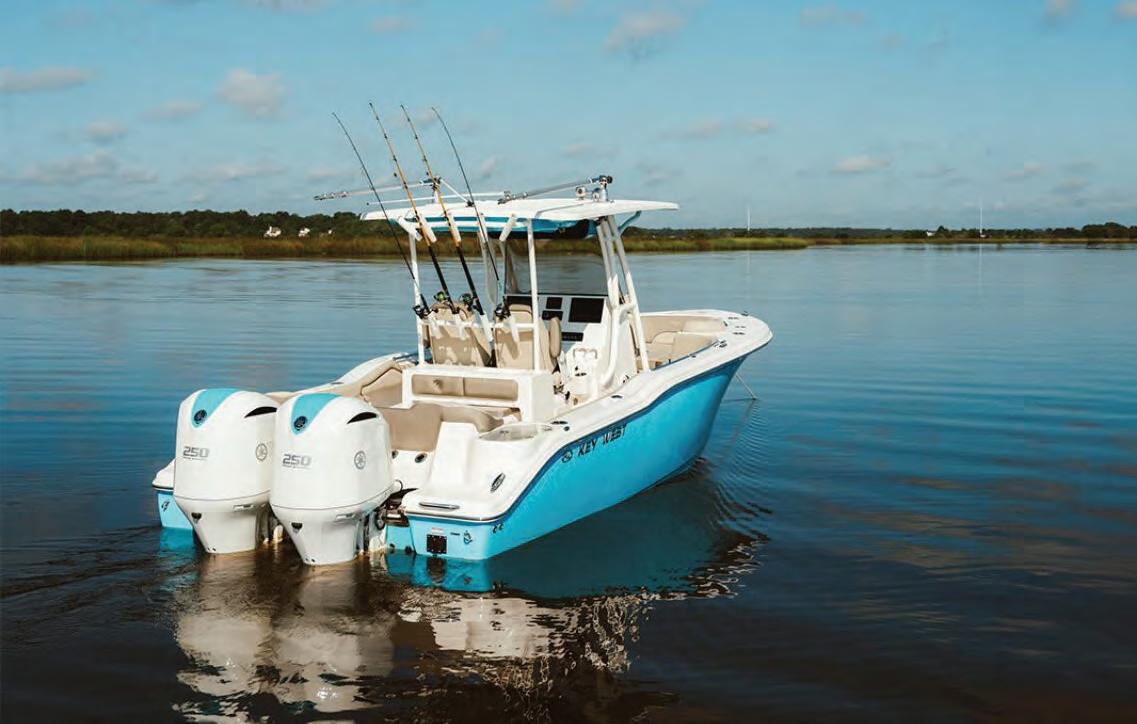
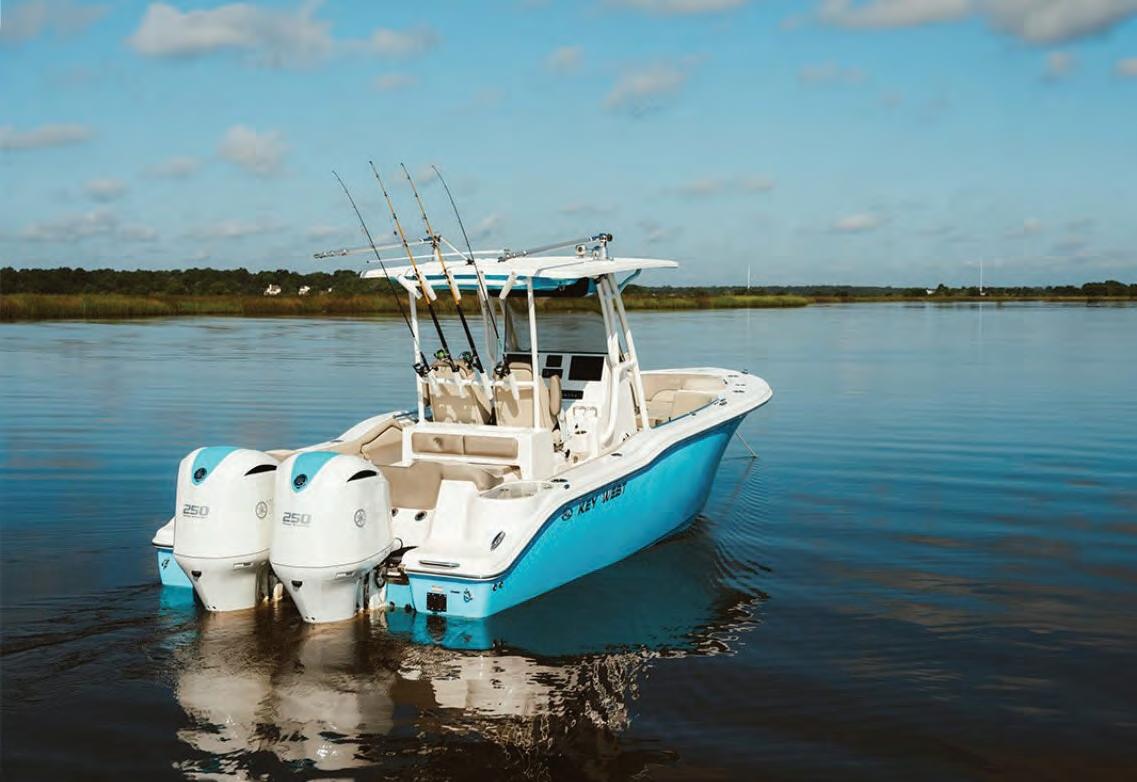






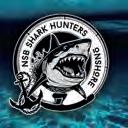

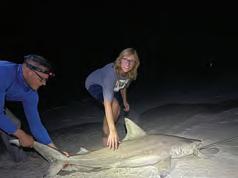

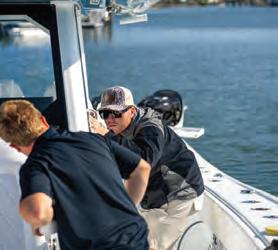


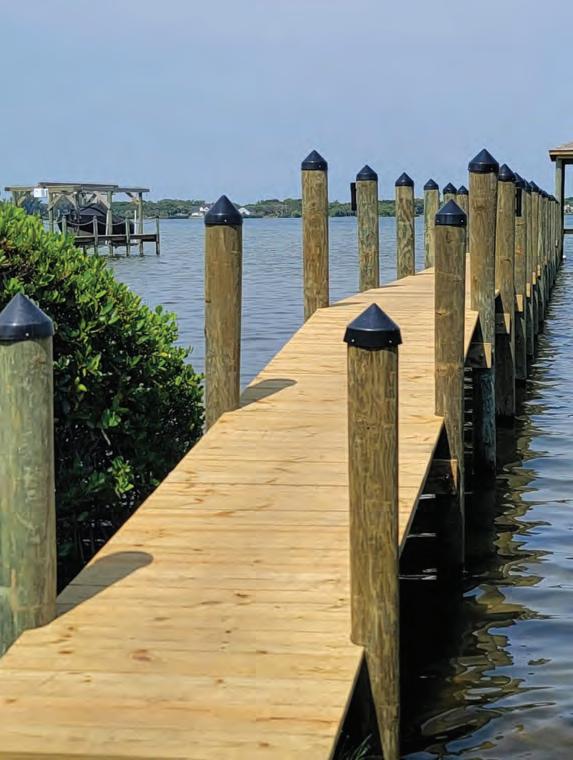
Hey guys, Captain John here with your monthly Fishing report for November. As the storms roll out and the clean cooler water rolls in we should be expecting some red hot fishing action over the next month or so into the winter. Inshore the mullet run is coming towards the back end of the migration. Big redfish, snook, and tarpon are fired up and can be found at the jetties docks bridges and bays. We also have reports of black, drum and sheepshead coming in with the cooler water. For the offshore report the water has been pretty dirty, most of the month of October, because of all the hurricanes, but as those fade off, and the cold fronts come through the sailfish as well as some straggler, mahi and tuna will be around and caught while trolling. The Bottom fishing is going to heat up with snapper, trigger fish, and shallower water grouper. It looks like it’s going to be a great month. So you guys gear up and get ready to catch some fish.


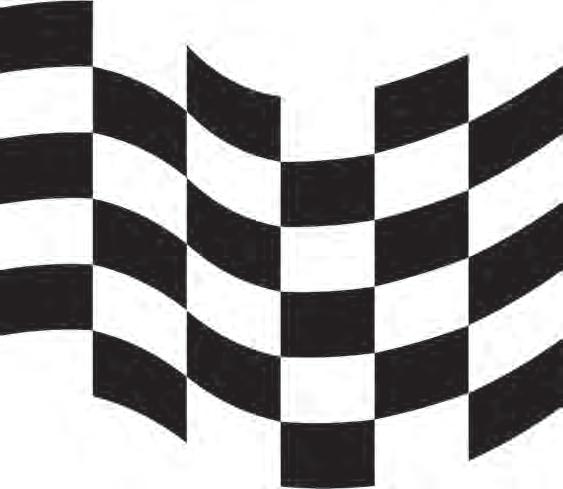
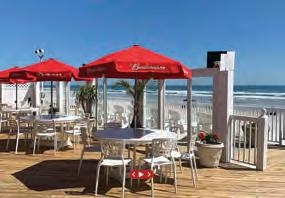
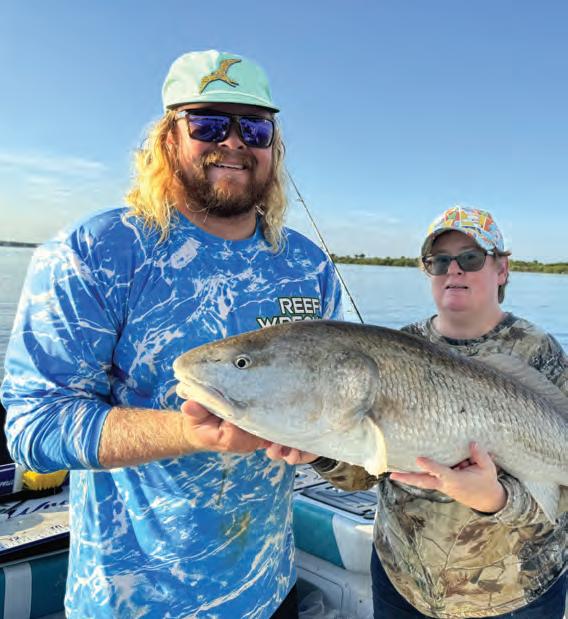
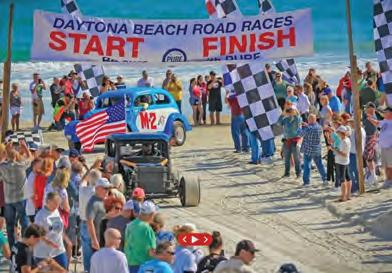

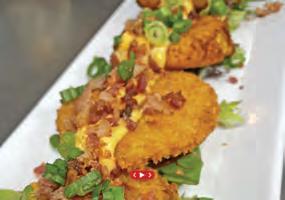

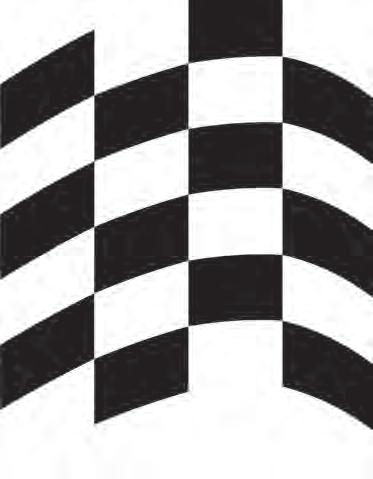

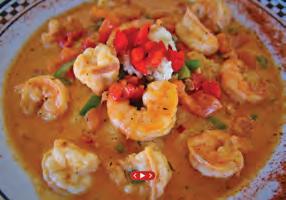




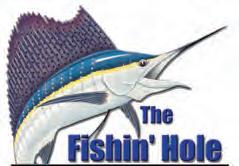
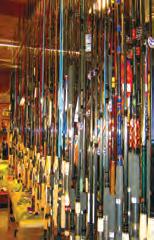
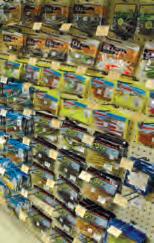
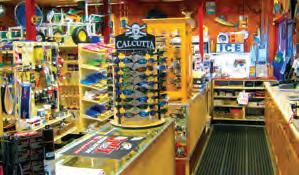



































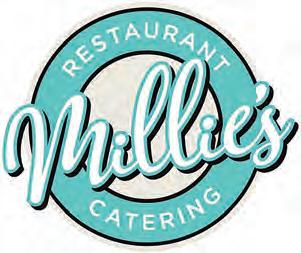


Locally Owned With A Chef Inspired Menu
Locally Owned With A Chef Inspired Menu
Locally Owned With A Chef Inspired Menu



Locally Owned With A Chef Inspired Menu
Locally Owned With A Chef Inspired Menu
Locally Owned With A Chef Inspired Menu
Millie’s offers fresh LOCAL seafood, meat and produce.
Millie’s offers fresh LOCAL seafood, meat and produce.
Millie’s offers fresh LOCAL seafood, meat and produce.
Millie’s south
3218 S. Atlantic Avenue
Millie’s offers fresh LOCAL seafood, meat and produce.
Millie’s offers fresh LOCAL seafood, meat and produce.

3218 S. Atlantic Ave, Daytona Beach Shores 386-275-1492
Millie’s offers fresh LOCAL seafood, meat and produce.
Millie’s south

Millie’s south
Daytona Beach Shores, FL 32118 386-275-1492
3218 S. Atlantic Avenue

3218 S. Atlantic Ave, Daytona Beach Shores
Millie’s North
3218 S. Atlantic Avenue
3218 S. Atlantic Avenue Daytona Beach Shores, FL 32118 386-275-1492
Daytona Beach Shores, FL 32118
3218 S. Atlantic Ave, Daytona Beach Shores
3218 S. Atlantic Avenue
386-275-1492
Hours:
3218 S. Atlantic Avenue
386-275-1492
Daytona Beach Shores, FL 32118 386-275-1492
Daytona Beach Shores, FL 32118
330 S. Atlantic Ave, Ormond Beach 386-238-9756
386-275-1492
Monday 11am-9pm • Tuesday closed
Hours:
Daytona Beach Shores, FL 32118
386-275-1492
Hours:
Millie’s North
Millie’s North 330 S. Atlantic Ave, Ormond Beach 386-238-9756
Monday 11am-9pm • Tuesday closed
Wednesday - Saturday 11am-9pm Sunday 9am-9pm
386-275-1492
Hours:
Monday: 11am - 9pm tuesday: Closed
Monday 11am-9pm • Tuesday closed
Hours:
330 S. Atlantic Ave, Ormond Beach 386-238-9756
Hours:
Wednesday - Saturday 11am-9pm Sunday 9am-9pm
Monday 11am-9pm • Tuesday closed
Wednesday - Saturday 11am-9pm Sunday 9am-9pm
Wednesday - sat: 11am - 9pm sunday: 8am - 9pm
Monday 11am-9pm • Tuesday closed
Wednesday - Saturday 11am-9pm Sunday 9am-9pm
Monday: 11am - 9pm tuesday: Closed
Monday 11am-9pm • Tuesday closed
Monday: 11am - 9pm tuesday: Closed
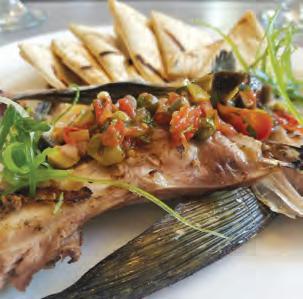
Wednesday - Saturday 11am-9pm Sunday 9am-9pm
Wednesday - sat: 11am - 9pm sunday: 8am - 9pm
Wednesday - Saturday 11am-9pm
Wednesday - sat: 11am - 9pm sunday: 8am - 9pm
Sunday 9am-9pm






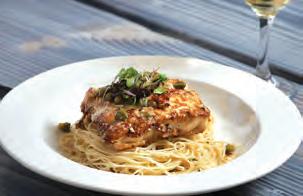





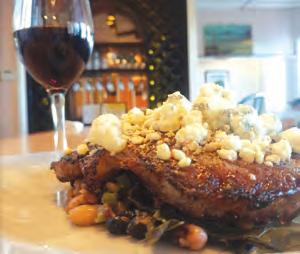




NSB Outfitters specializes in offshore bait and tackle, as well as inshore, flats, and fly fishing gear, with extensive options in apparel and accessories. New Smyrna Outfitters has the knowledge and experience to guide through whatever type of fishing you’re looking to do.
New Smyrna Outfitters specializes in offshore bait and tackle as well as inshore, flats, and fly fishing gear. Along with carrying all of the equipment you need, NSO offers services like rod/ reel repair, line spooling, splicing, rigging, outrigger setup, and much more. If you are not looking for fishing tackle, that’s ok, NSO also offers the best in apparel, eyewear, drinkware, and more. Some of the quality brands include but aren’t limited to Costa, Bajio, Olukai, Free Fly, Marshwear, Aftco, Anetik, Yeti, Stanley, Hemlock, Salty Crew. New Smyrna Outfitters strives to carry the best brands and offer the best customer service.

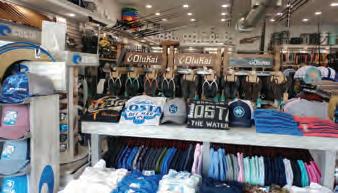









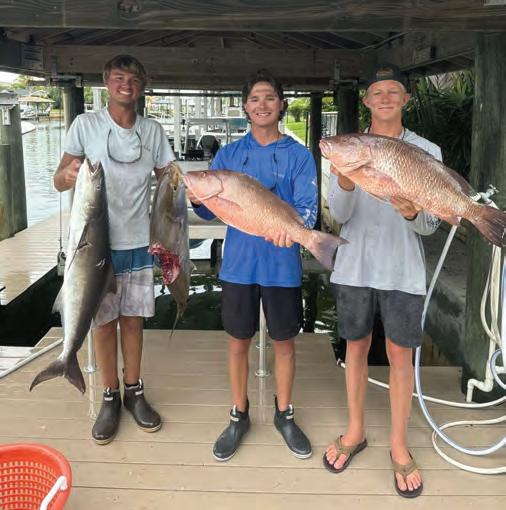
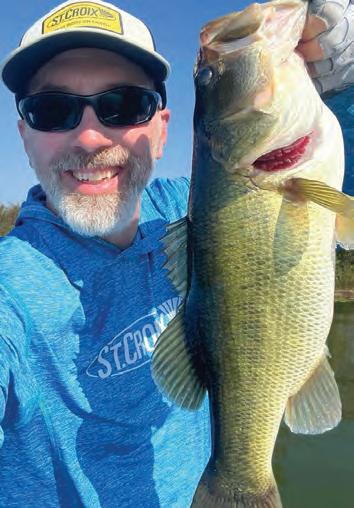


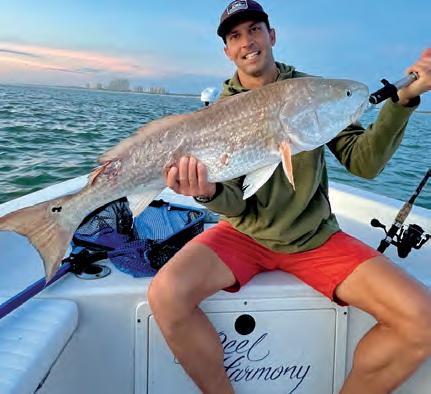

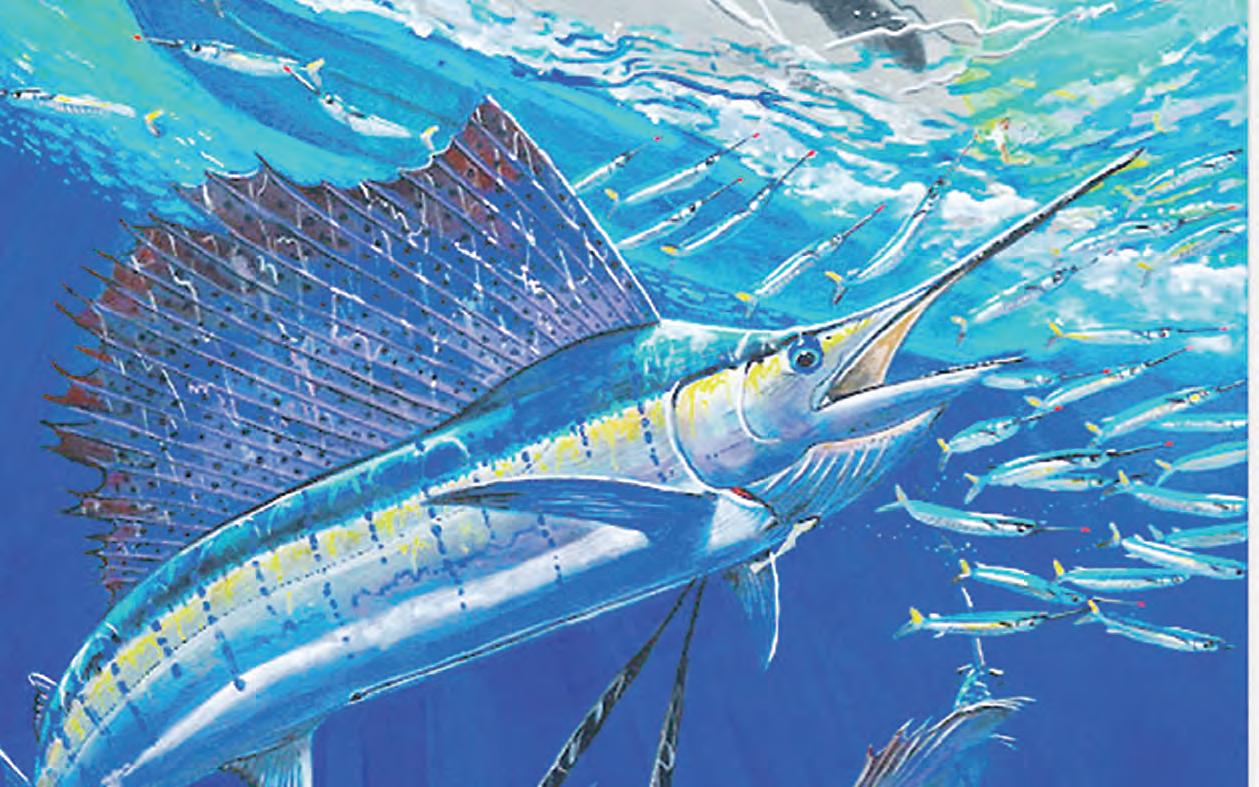


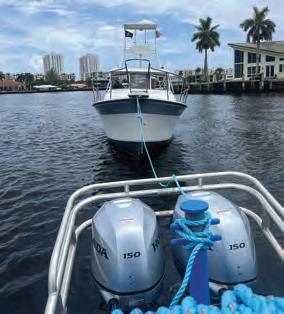
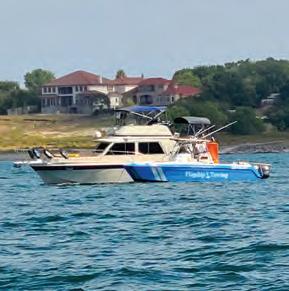

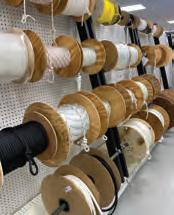

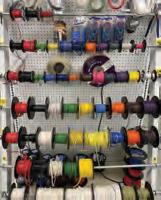
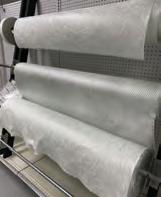

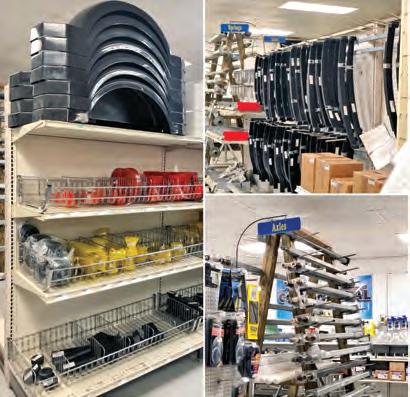




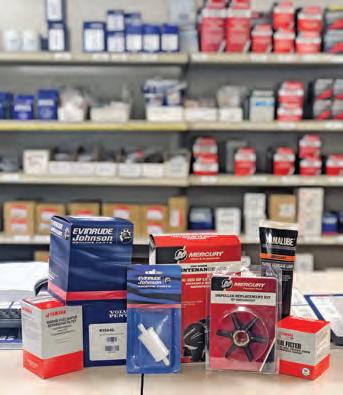
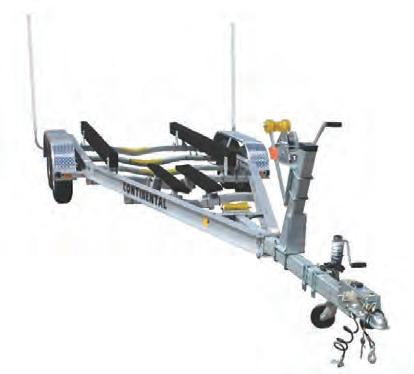







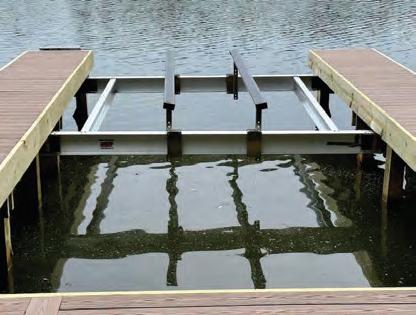
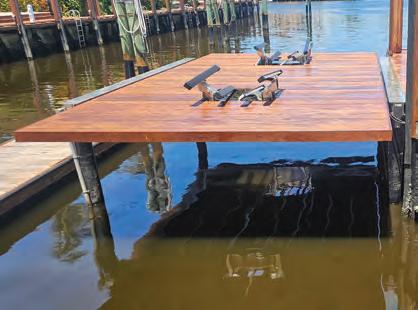
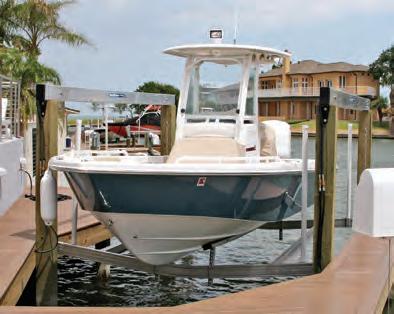

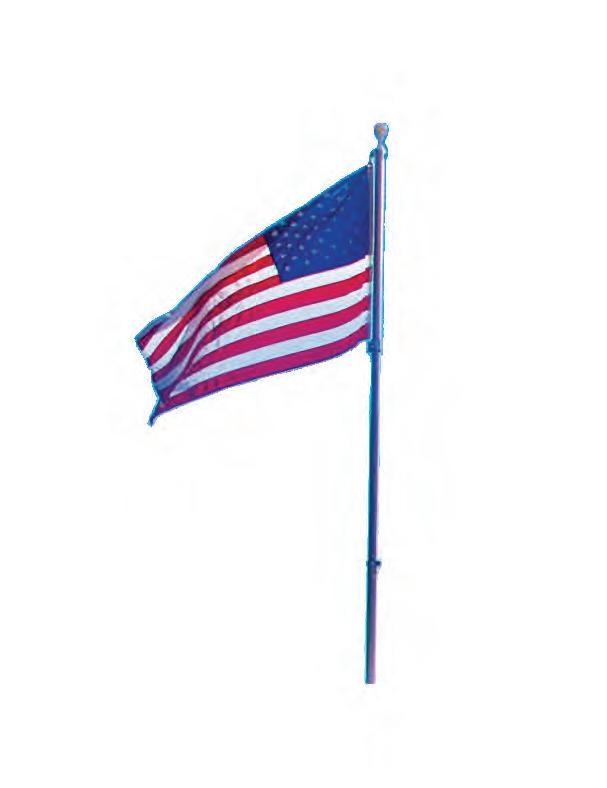
ShoreStation hydraulic boat lifts are a reliable choice for coastal residents and boating enthusiasts alike. Their strong construction, made with corrosion-resistant materials, allows them to withstand harsh environmental conditions, including sun, storms, and saltwater damage. ShoreStation provides a steadfast solution for protecting waterfront investments, ofering peace of mind to owners in the Sunshine State.

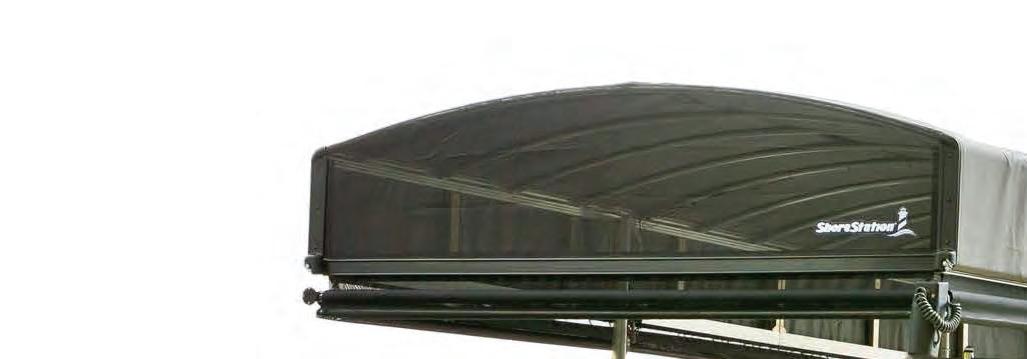


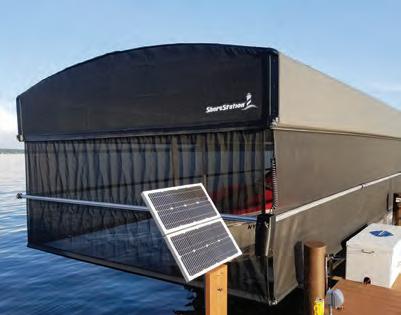

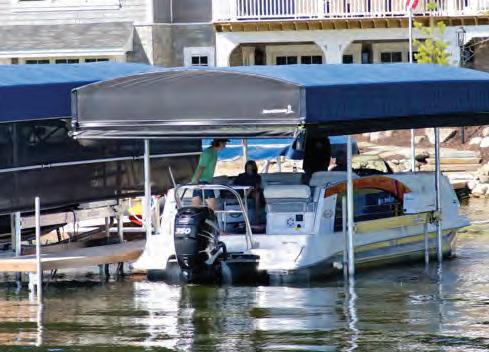
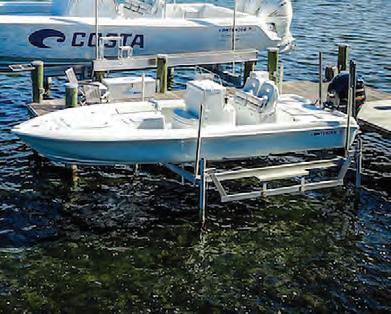
Equipped with exceptional weather resistant fabric and breathable SunTex 80 woven mesh ends for maximum protection and durability,

Made from the highest quality materials, our innovative hydraulic boat lift is one of the fastest and safest lifts on the market today. When you have a hydraulic lift, there’s no need to worry about wind and waves getting in your way. This lift will give you confdence to safely land and secure your boat in less-than-ideal conditions.
Never miss another moment on the water. Power your lift with clean, free solar power. Our speedy 20 watt charger features solar regulator drainage protection, saving your battery from permanent damage caused by overcharging.



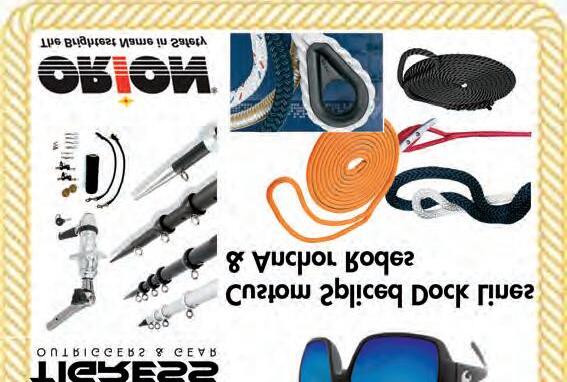



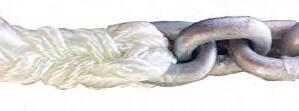


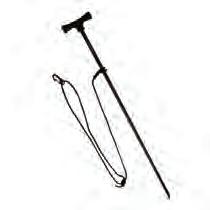








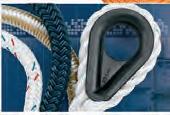
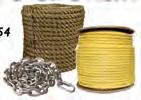
By Dr. Sal Benezo
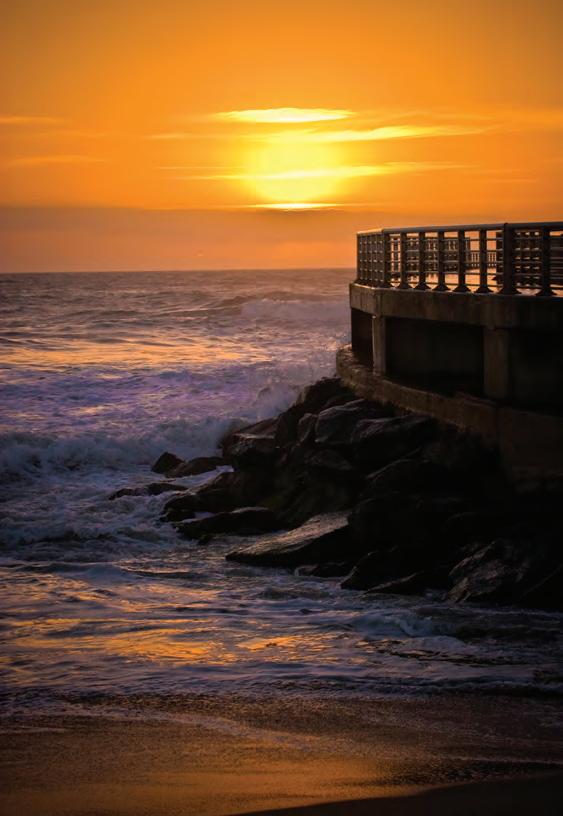

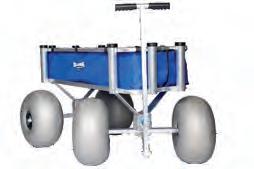



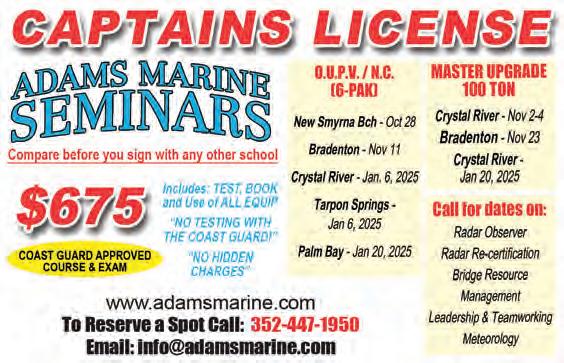
During a hurricane, fsh experience dramatic changes in their environment that can afect their behavior, habitat, and survival. As the atmospheric pressure drops with an approaching hurricane, the water pressure at diferent depths also changes. Fish have swim bladders that help regulate buoyancy, and the rapid changes in pressure can afect how they swim and maintain their depth. Some fsh may dive deeper to avoid the surface turmoil.
Hurricanes churn up sediment from the seabed, making the water murkier. Tis can reduce visibility, afecting how fsh fnd food and avoid predators. In coastal areas, this turbidity can also carry pollutants and toxins from land runof, negatively impacting the water quality.
Hurricanes generate powerful underwater currents and massive waves. Many fsh seek refuge in deeper waters, coral reefs, or underwater structures to avoid being swept away. Shallow-water fsh may struggle more to fnd shelter from the turbulence, which could lead to displacement or death.
Hurricanes ofen bring a rapid infux of fresh water from rain and runof, lowering the salinity of coastal waters. Some species, especially those adapted to certain salinity levels, may be stressed or forced to move to more stable areas. Additionally, the mixing of ocean layers can lead to changes in water temperature, which can afect fsh metabolism and spawning behaviors.
Te disturbance of the water column can disrupt oxygen levels, particularly in areas where organic matter from land washes into the ocean. Decomposing plant material can deplete oxygen in the water, creating hypoxic (low oxygen) zones, which can force fsh to fee or risk sufocation.
Fish, especially schooling species, may instinctively move to safer waters before or during a hurricane. Some species seem to sense the change in barometric pressure and migrate to deeper or more sheltered areas ahead of the storm. However, fsh that get caught in the turbulent water may end up displaced far from their usual habitat.
Afer a hurricane, habitats may be altered signifcantly. Coral reefs, seagrass beds, and mangroves—essential fsh habitats—can be damaged, leading to long-term impacts on fsh populations. However, hurricanes can also bring benefts, such as replenishing nutrients and oxygen in certain water bodies, which can stimulate plankton growth and temporarily improve food availability for fsh.
Fish have evolved to withstand many natural disturbances, including hurricanes, but the intensity and frequency of storms can have lasting efects on fsh populations, particularly for those in fragile ecosystems.



TRACY PATTERSON
Costa Rica is a renowned destination for anglers, ofering calm seas, ideal fshing conditions, and worldclass fshing. It is especially popular among female anglers due to its safety, tournaments, and supportive crews, making it an unforgettable experience.
If you’re seeking high odds of catching billfsh, Costa Rica is the place to be. On a full day ofshore, it’s common to get multiple strikes. Te fat, calm seas make it enjoyable for anglers of all levels, letting you focus on reeling in catches rather than battling rough waters.
Costa Rica hosts two ultra prestigious women-only tournaments: the Ladies Angler Tournament at Los Suenos Resort and Marina, and the Pescadora Billfsh Championship at Marina Pez Vela. Both tournaments create a supportive
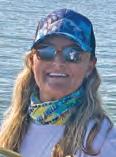
yet competitive environment for anglers of all skill levels. Te Pescadora Championship is
particularly unique, ofering two Female Angler of the Year awards based on diferent fshing techniques. It encourages women to challenge themselves and grow in the sport.
Costa Rica is ranked #1 in Central America for safety, and recent laws further protect women from harassment. Female anglers can feel comfortable walking around resorts and marinas. Charter feets also adhere to strict safety regulations, ensuring peace of mind while on the water.
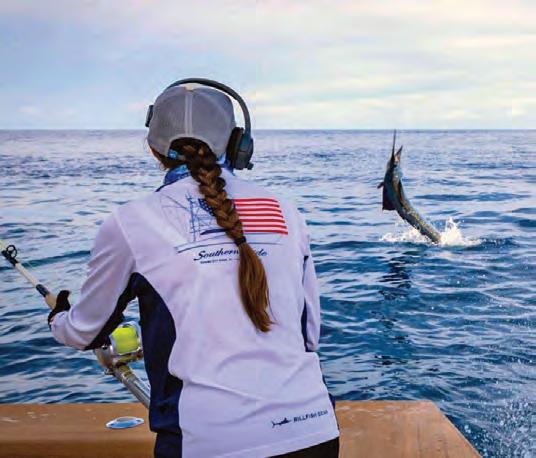
Whether you’re staying at a boutique hotel or a private home, Costa Rica ofers a range of accommodations for groups of all sizes. Many resorts are conveniently located near marinas, allowing easy access to fshing trips and other adventures.
Costa Rica is home to many women who support the lady angler movement. Te captains and crews are eager to teach beginners, helping them hook their frst billfsh or refne their skills. With women accounting for a growing percentage of anglers, Costa Rica ofers a welcoming and empowering environment for female anglers.
Whether you’re an experienced angler or a frst-timer, Costa Rica ofers an unbeatable fshing experience. Its exceptional conditions, tournaments, safety, and camaraderie make it the top destination for lady anglers.
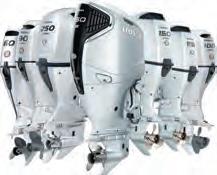





IBy Capt. Michael Okruhlik
t’s that thrilling time of the year, founder time! Te fall migration, reaching its peak in November along the Gulf Coast, promises an exciting infux of founder to their spawning grounds. Louisiana, following Texas, has also implemented a closed season during this peak run. But remember, the inability to keep fatties during this time doesn’t dampen the thrill of catching them.
Flounder will be migrating into the Gulf during this time, so the apparent ambush areas will be around passes that lead to the Gulf. Te founder will position themselves in diferent regions based on the tide level and current strength. In addition to using their burying-in-the-sand ambush technique, they also utilize structure in several ways.
First, any object that protrudes above the bottom is a great ambush point. Tis ofers a current break for forage fsh to gather directly above a buried founder, making for an easy meal. Objects such as bulkheads are also great ambush points. Flounder like to position themselves against the solid barrier and I think this can be for two separate reasons depending on what other factors are at play. As mentioned above, it could be a current break, especially if the bulkhead has a corrugated shape. When a founder settles against a bulkhead, its prey has less direction in which it can fee, allowing the founder greater odds of capturing it. When targeting founder, never pass up a bulkhead.
Secondly, founder can be caught using a variety of lures and live bait, especially if you keep it in contact with the bottom to increase your chances of a strike. When it comes to live bait, a frisky mullet is your best bet for landing a larger founder. If you’re aiming for a trophy, this is the way to go. Personally, I prefer fshing with lures, particularly the paddle tail style. Jerk-style sof plastics and bucktails can also be efective when worked in the same manner.
If I had to pick a tide to maximize my time on the water, I would choose a medium fow outgoing. Although there are no set rules that fsh always follow, I feel the founder feed more on their way out to the gulf, utilizing
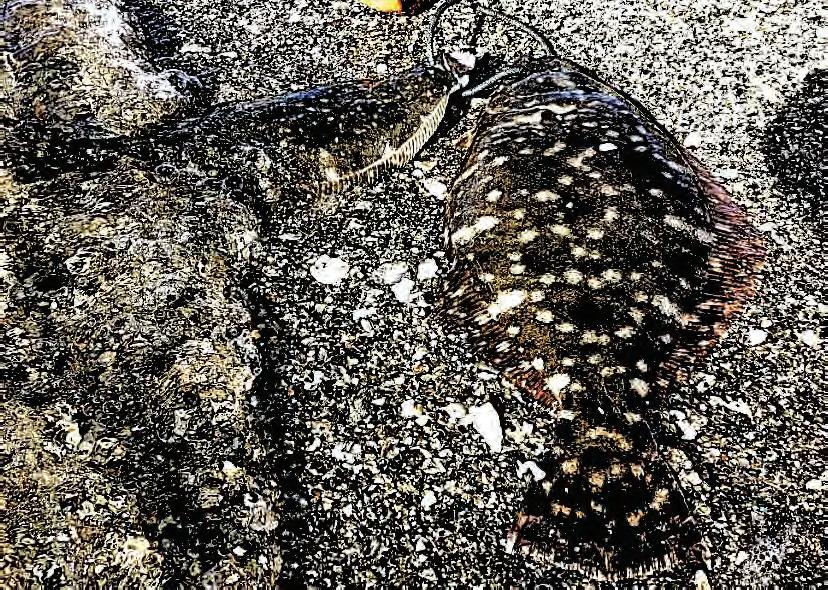
the current to ease their journey. Contrary to the incoming tide, they bury themselves rather than fght against the current.
Don’t let the closed season discourage you from targeting founder during this migration; it will have its advantages. Going forward we will undoubtedly have a larger founder population, but the instant gratifcation will be a lot less trafc in our favorite founder spot! I will use the closed season to target a new personal best this season, as should you.
Capt. Michael Okruhlik is the inventor of Knockin Tail Lures® and the owner of www.MyCoastOutdoors.com.

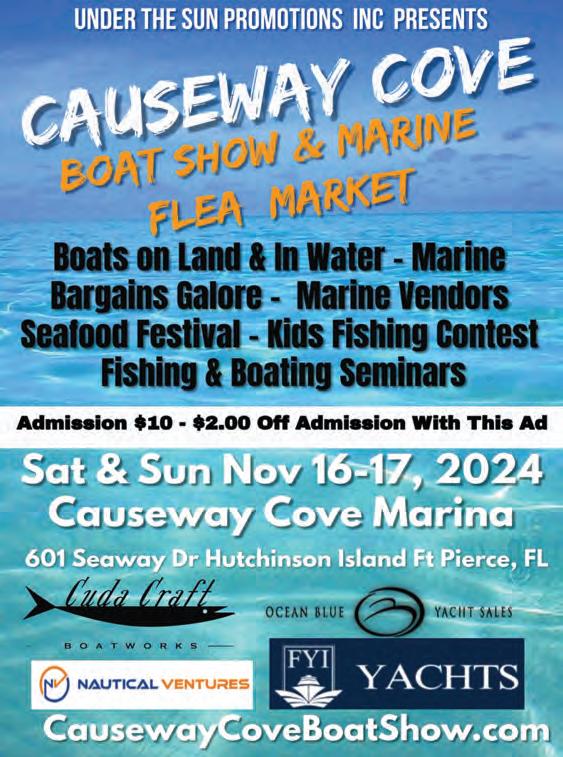

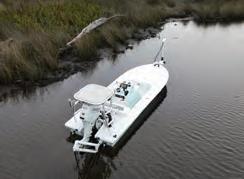
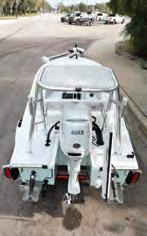
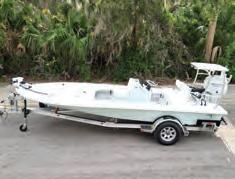





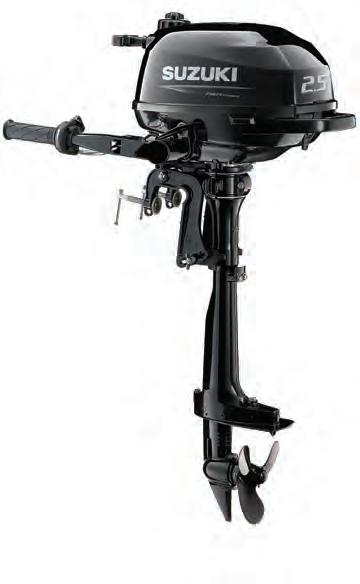

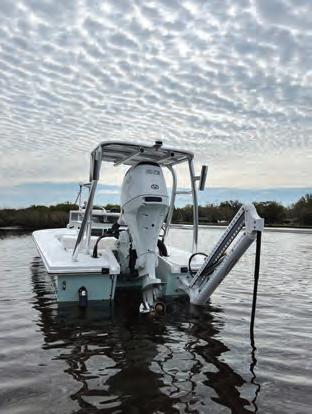
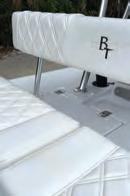
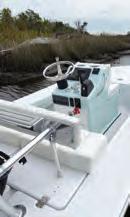

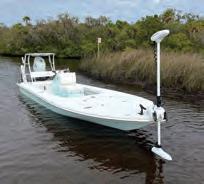

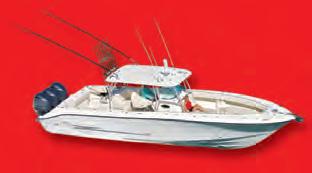
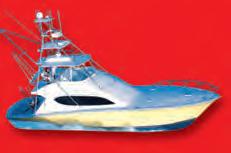


OTim Barefoot

f course, October is when it all starts, but if you like to bottom fsh, then November is the month the turbo kicks in, leading to the crescendo of the year… December. I’ve always said the week of Christmas is the apex of the grouper fshing calendar, and I’ll stand by that statement now. Tis is when larger (male) gags move inshore to establish their territory on inshore ledges, wrecks, and live bottom, much like buck deer making scrapes and rubs to mark their territory. Tese males now wait for the smaller females to show up in numbers to spawn, and the bite traditionally goes of the charts.
A small piece of hard bottom can attract large numbers of fsh if it contains the right ingredients. First and foremost, you need to locate their food. Go to the places that have traditionally held the bait—cigar minnows, sardines, beeliners, etc. “Find the bait, fnd the fsh” has been my thought process for years. Tese fsh won’t show up to a party without food—common sense. You can anchor up on a stack of bait without seeing a big mark of fsh, but afer a few bites, you’ll notice the screen light up with more and more fsh showing up.
Anchoring up is key to shallow water grouper fshing. Te sound of fsh feeding travels great distances and doesn’t go unnoticed. Once an area is fred up, constant bites supercharge the atmosphere down there. If you’re drifing, you won’t get a specifc area fred up; you’ll only go back where you got bites. But if you anchor, the fsh come to you to join in. Tis draws the alpha predators—big sharks. Yes, you’ll lose some fsh and tackle to these bruisers, but enjoy the ride while it lasts. When sharks show up, it’s time to move on to another ledge or further down the same one.
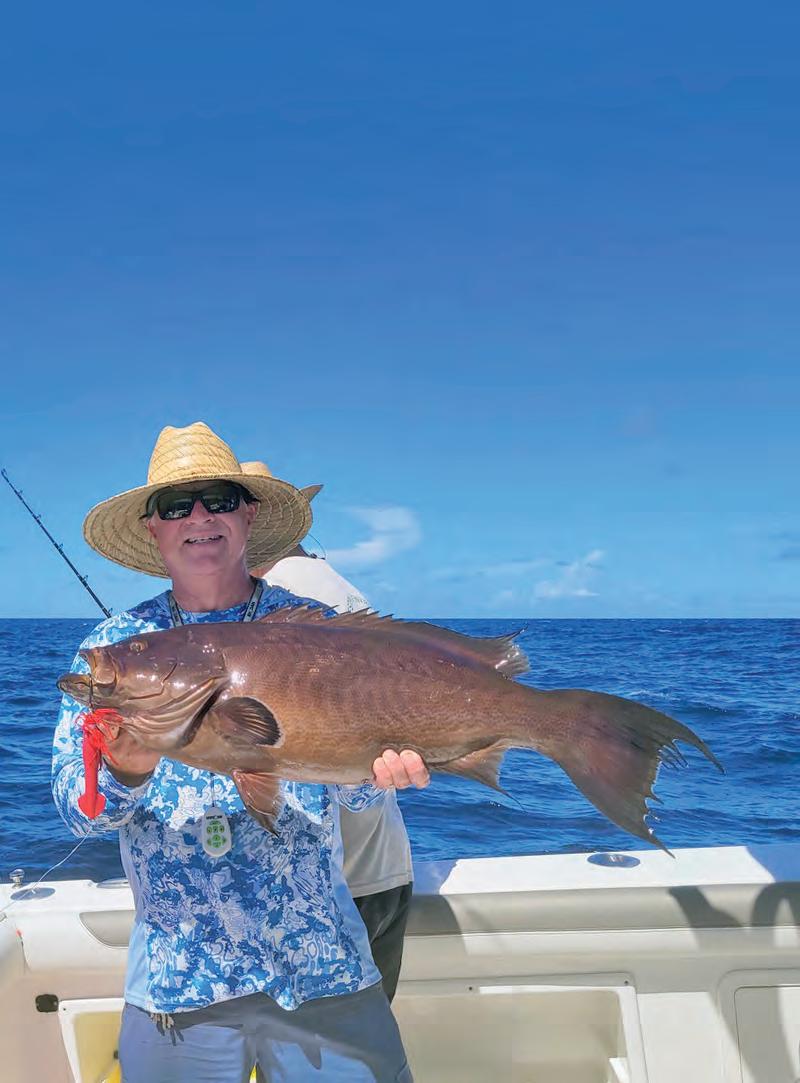
Back to noise... Keep in mind that while we hear very little, fsh hear everything. Sound travels far underwater, and everything you do on deck—slamming cooler lids, dropping hard objects, loud music, yelling—is heard by the fsh. It could be the diference between catching smaller cows or big bulls. Large male groupers didn’t get old by being dumb. You don’t kill big bucks by being noisy, so treat your fshing with the same respect.
Te folks that target grouper come home with grouper. Te ones who go “bottom fshing” with cut bait and chicken rigs come home with “bottom fsh.” As Franklin Covey said, “begin with the end in mind.” If you’re targeting grouper, think and act like it. Put baits on the bottom that avoid trash bites. Spend time jigging up some of that “trash” and drop them back down on a Decoy Jig for optimal results. Watch some of my videos on YouTube (Tim Barefoot) for examples of what I’m saying.
For more information, visit barefootcatsandtackle.com.
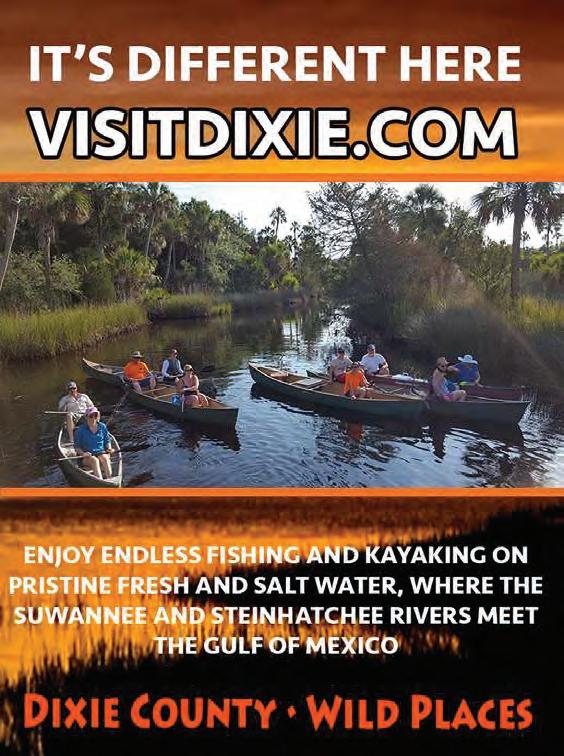




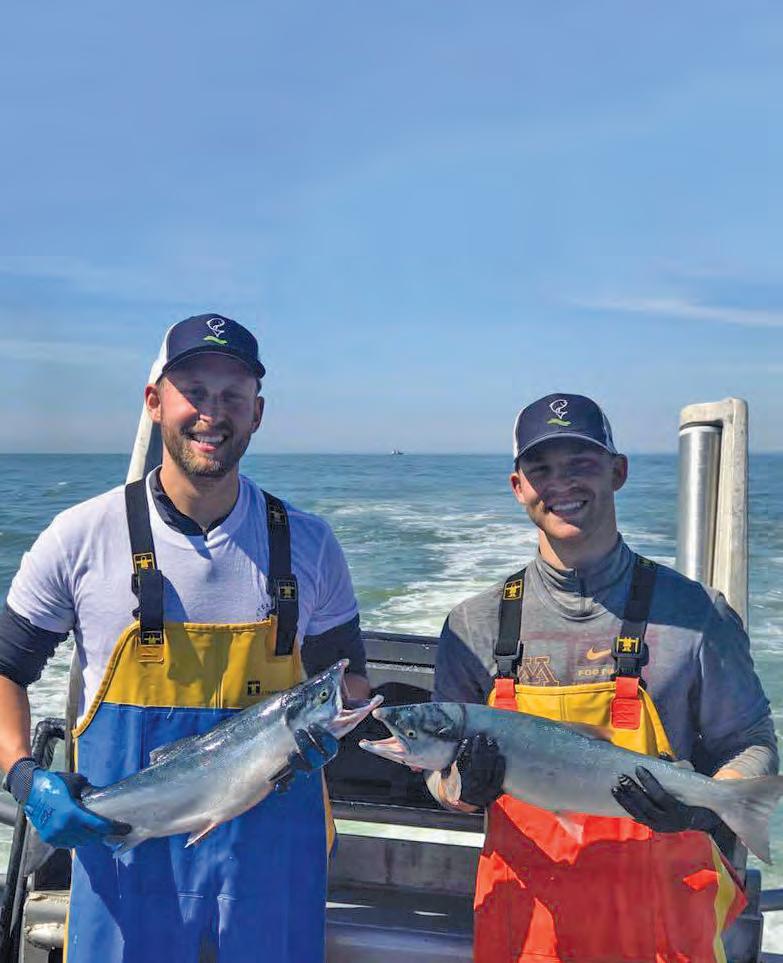


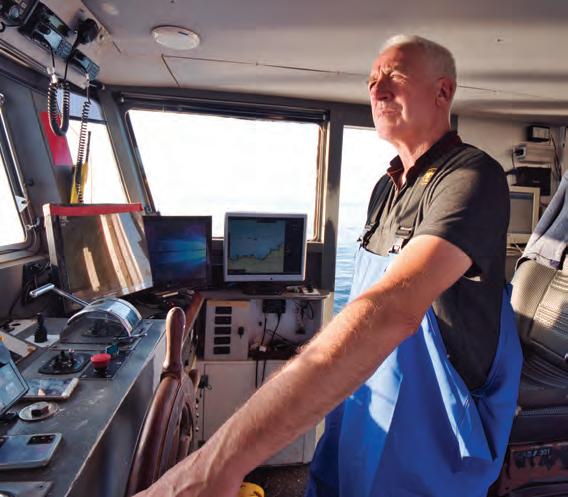
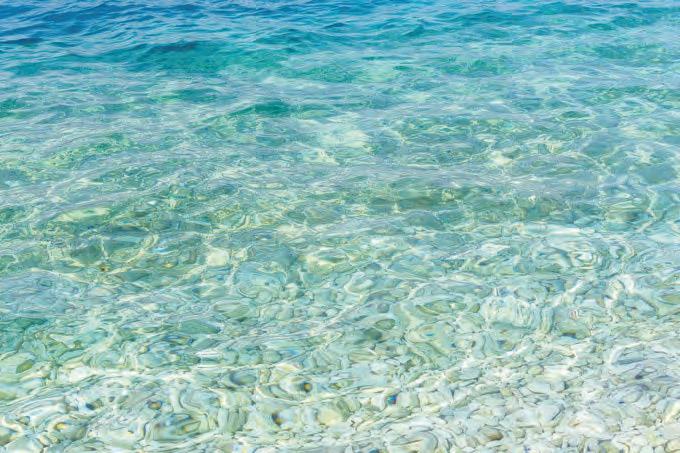




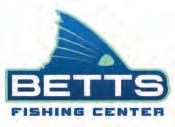

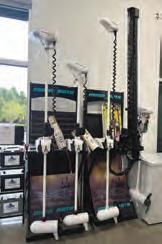
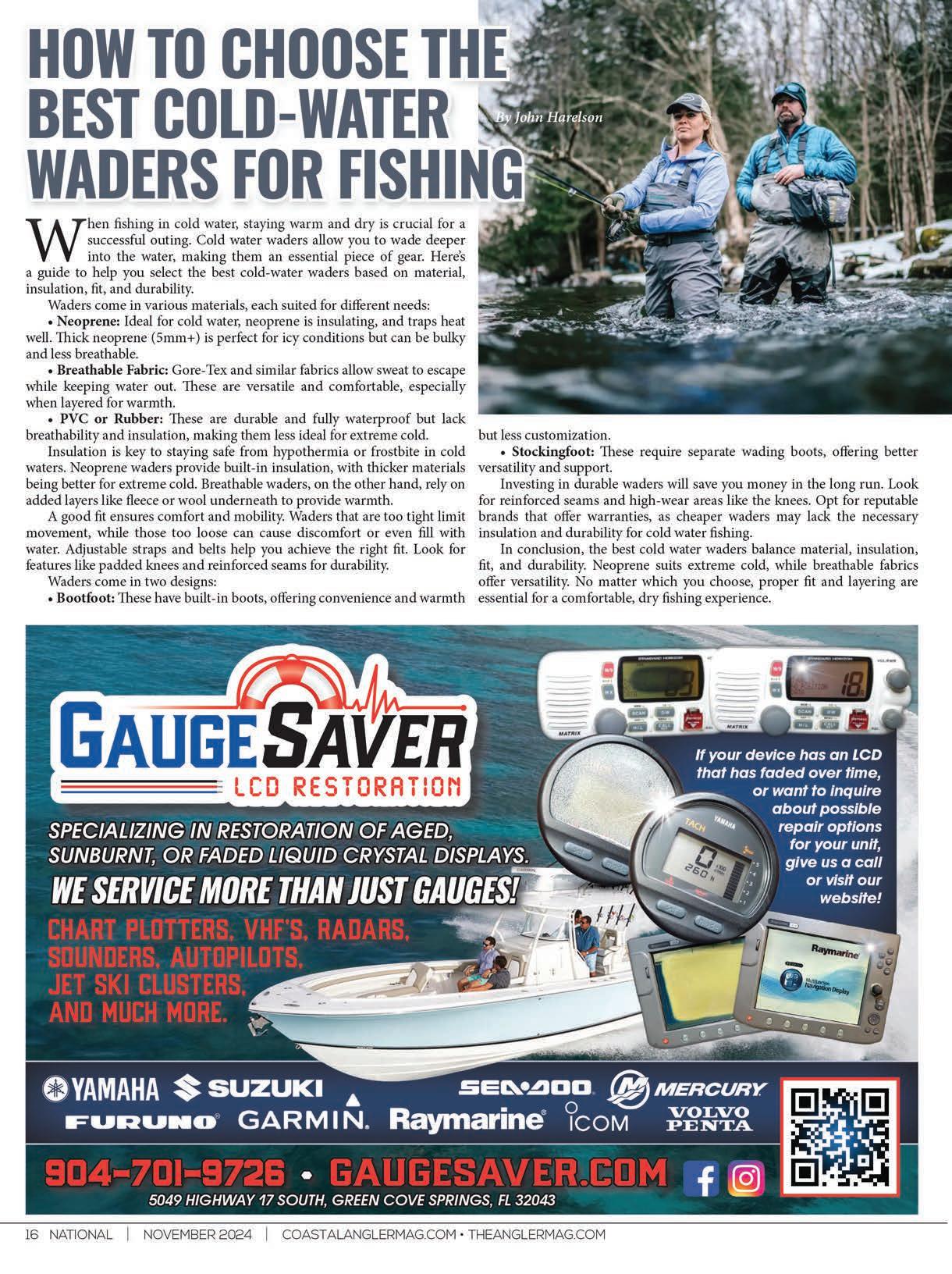


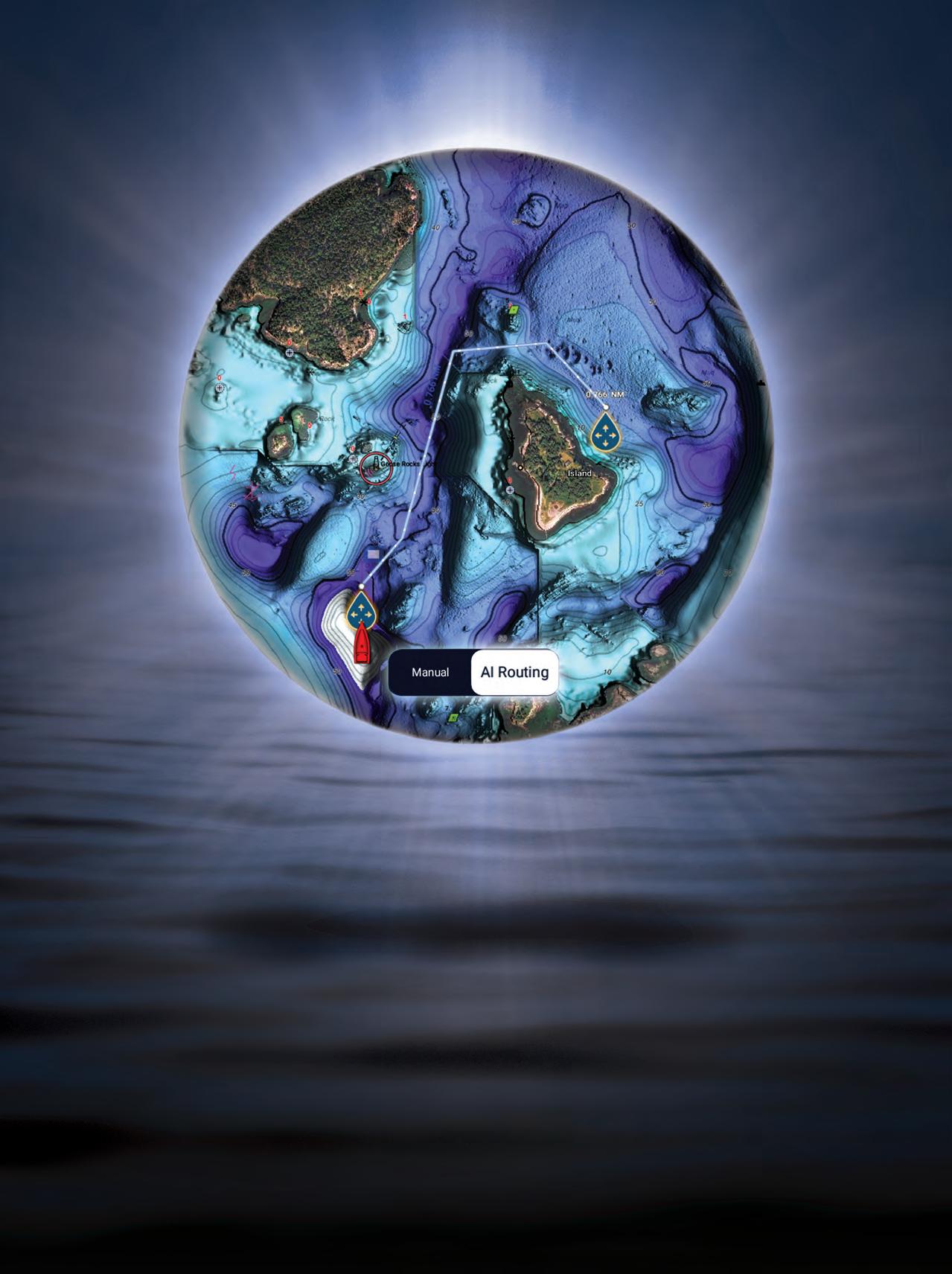
You want AI Routing! Let TZ MAPS with AI Routing make route planning a snap. Don’t take our word for it. Scan here to see for yourself how easy it is!